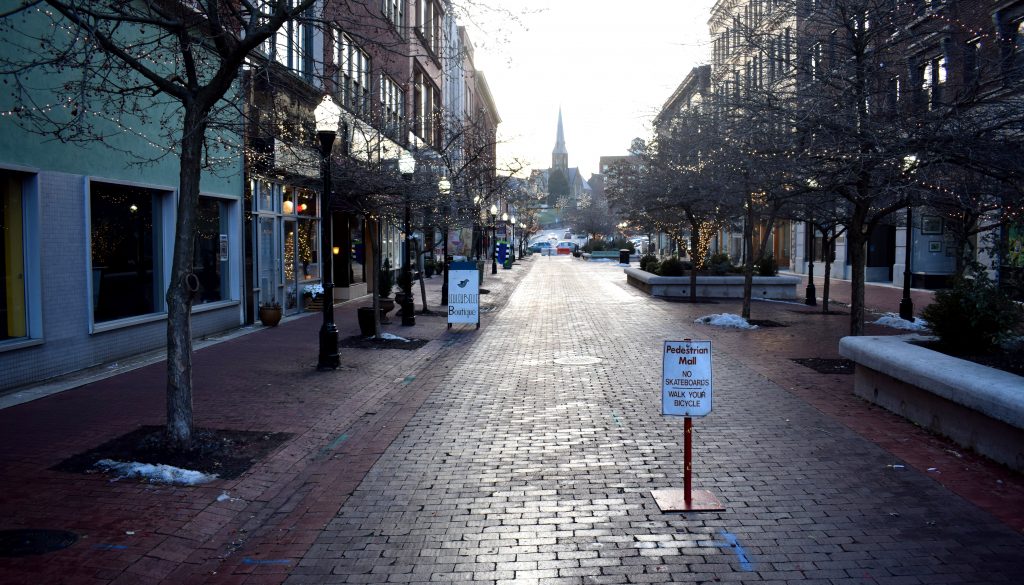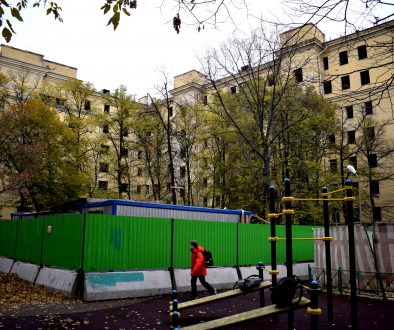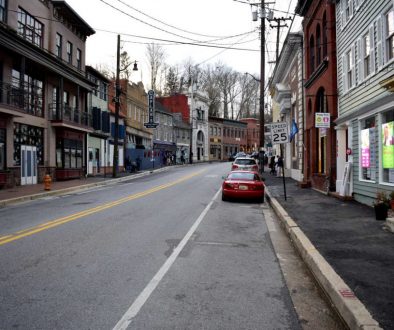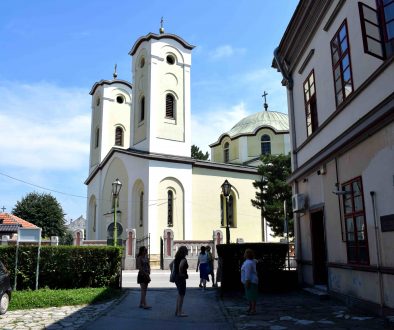After setting off from Washington DC and stopping in Hagerstown, the next stop on our tour of small town America was Cumberland, Maryland. With a population of just 20,859 and tucked in a valley surrounded by the Appalachian mountains, Cumberland is a picturesque tiny American city with a ton of history to its name.
Locals will tell you that Cumberland is where the south begins. Founded in 1787, Cumberland was named after Prince William, Duke of Cumberland, the son of King George II of England. For much of the 19th century Cumberland was the second largest city in Maryland following Baltimore due to its strategic position on the Western Maryland Railway which operated from 1852-1983.
The city is still divided by this railway, although it is rarely used.
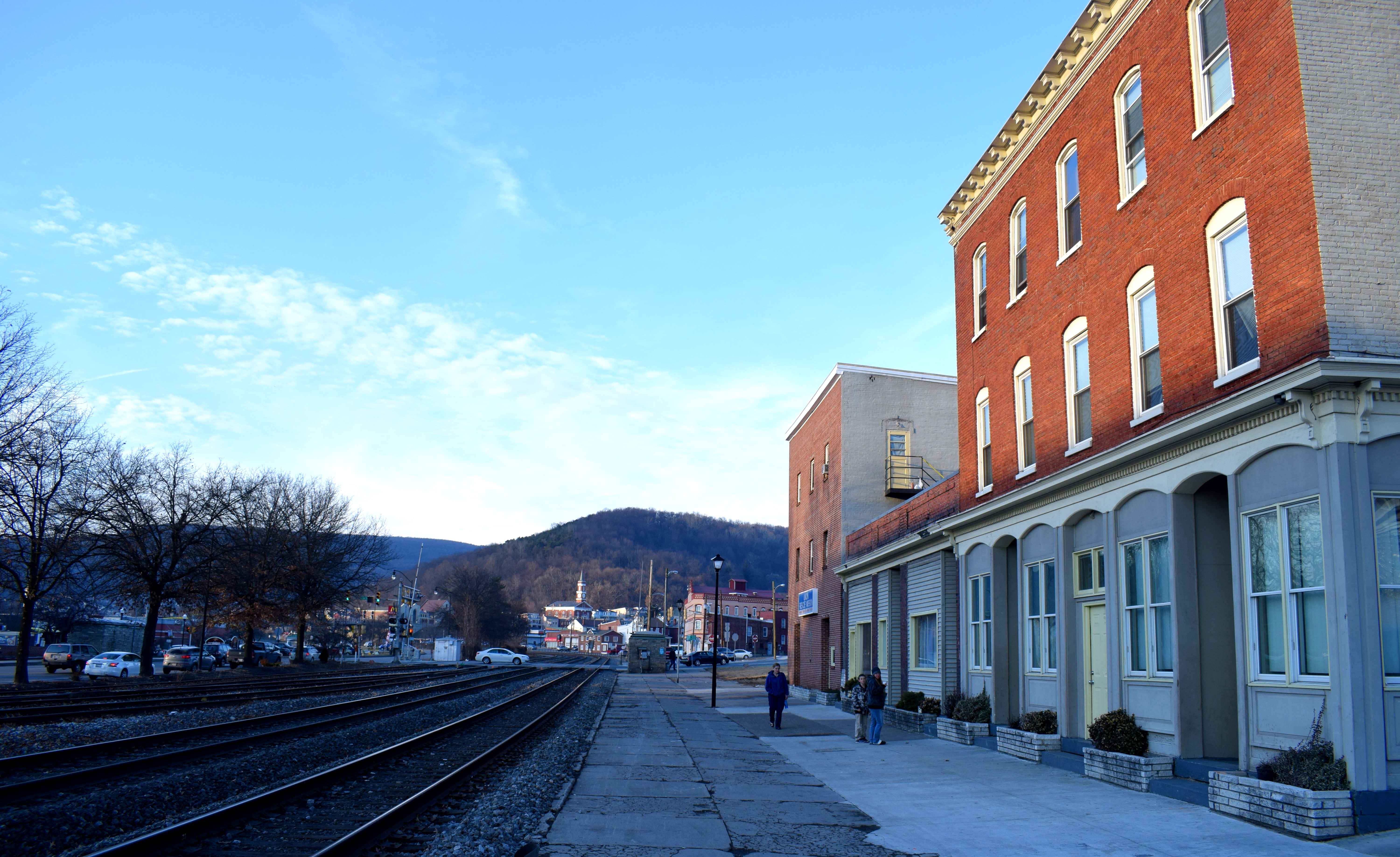 Near the entrance to the town there is a memorial to Americans who died in the Gulf War, Afghanistan and Iraq.
Near the entrance to the town there is a memorial to Americans who died in the Gulf War, Afghanistan and Iraq.
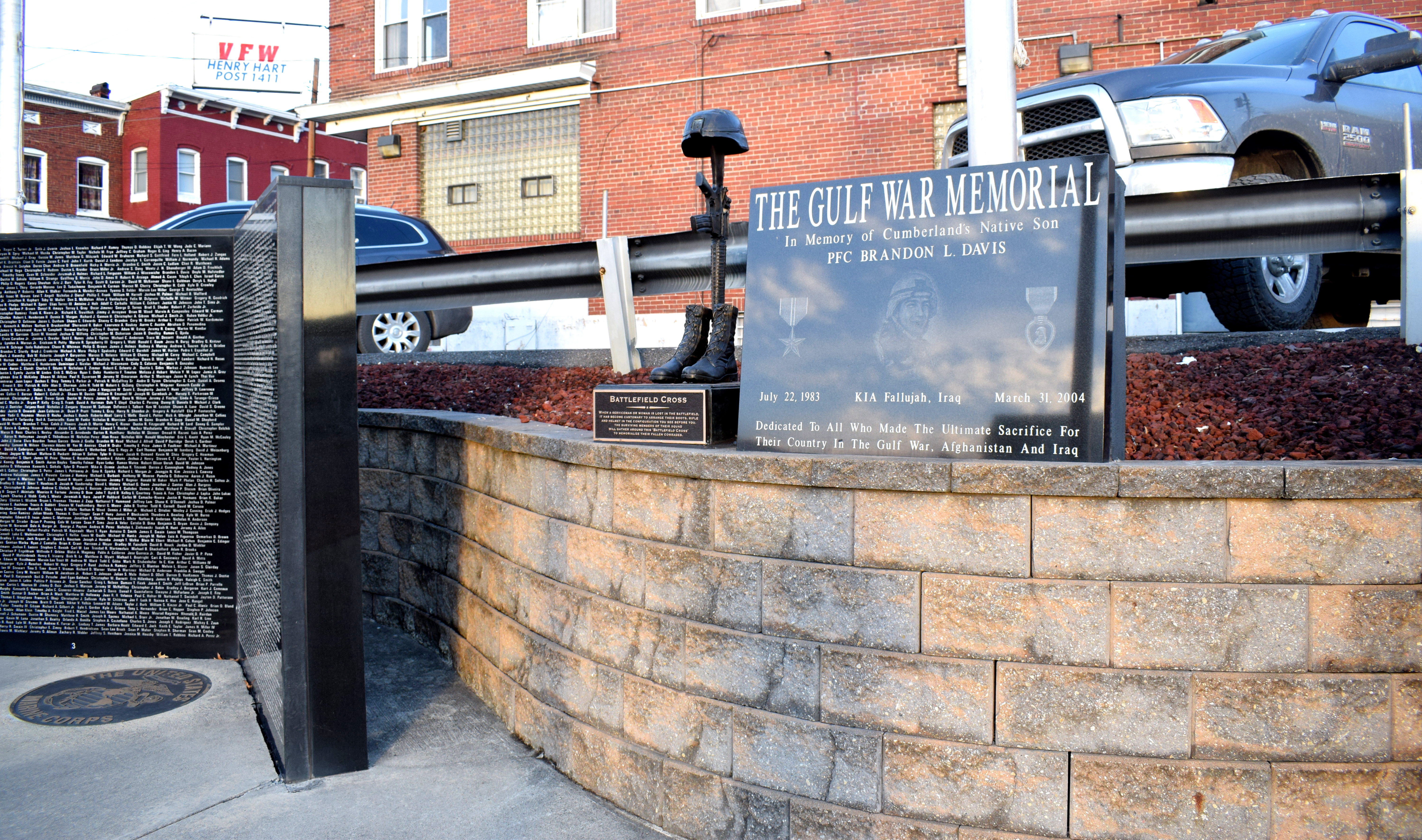 Cumberland had a lot of churches scattered throughout the city. Its location out in the mountains of western Maryland made it a strategic stop during the westward expansion of the United States. Many people would later on migrate and settle the state of Ohio from Cumberland.
Cumberland had a lot of churches scattered throughout the city. Its location out in the mountains of western Maryland made it a strategic stop during the westward expansion of the United States. Many people would later on migrate and settle the state of Ohio from Cumberland.
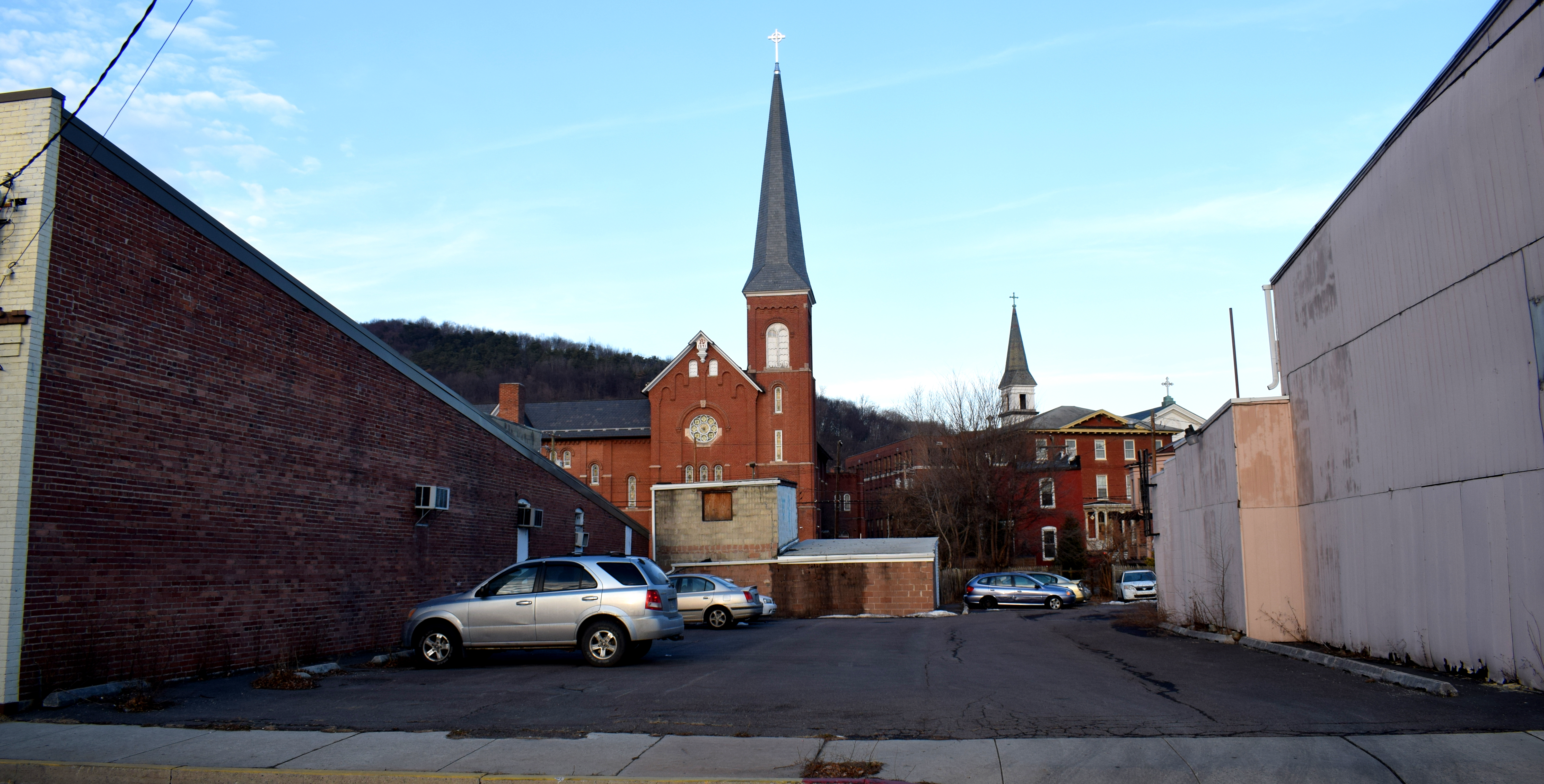 The St. Peter & Paul Church founded in 1848 and located on top of a steep hill overlooking the city. Cumberland is a very hilly city with beautiful views of the surrounding mountains.
The St. Peter & Paul Church founded in 1848 and located on top of a steep hill overlooking the city. Cumberland is a very hilly city with beautiful views of the surrounding mountains.
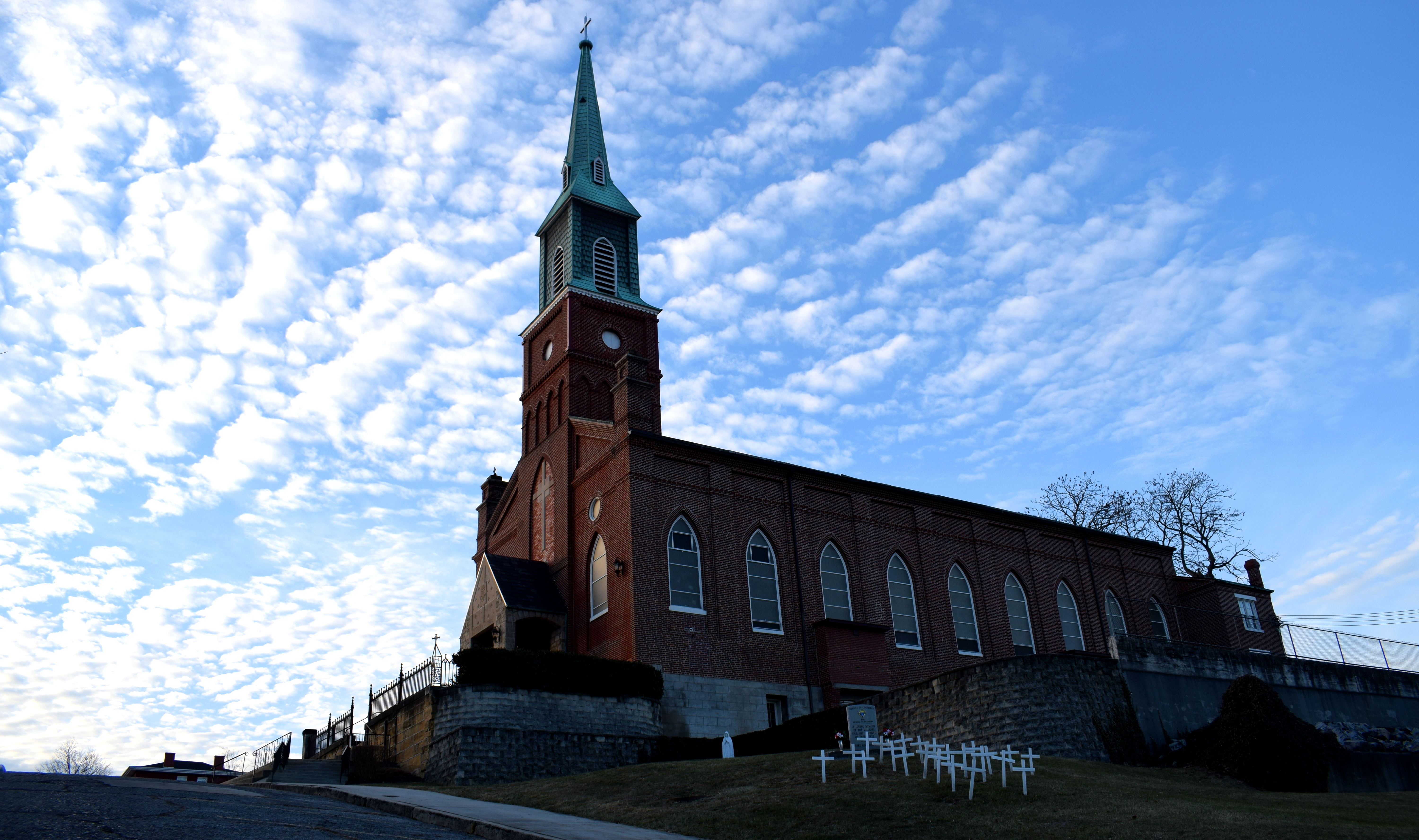 When Europeans first began migrating westward in the 1700’s they faced stiff resistance from Native American tribes which lived in the Appalachian mountains along the Potomac River. The state of Maryland eventually bought the land from Native Americans in 1744 opening the area up for settlement.
When Europeans first began migrating westward in the 1700’s they faced stiff resistance from Native American tribes which lived in the Appalachian mountains along the Potomac River. The state of Maryland eventually bought the land from Native Americans in 1744 opening the area up for settlement.
In 1750 Fort Cumberland was founded by English traders and a bitter rivalry developed between the French who wanted to claim the rich fertile lands of the Ohio Valley. Shortly after, the French and Indian War broke out in 1754. Following the American Revolution, Cumberland remained a border town on the edge of the newly established United States in the east and the plains of the Ohio Valley in the west.
The city developed rapidly in the 19th century with the introduction of railroads and canals. The coal industry took off and coal became one of Maryland’s chief exports as a state for much of the 1800’s.
A panoramic view of Cumberland from the hill.
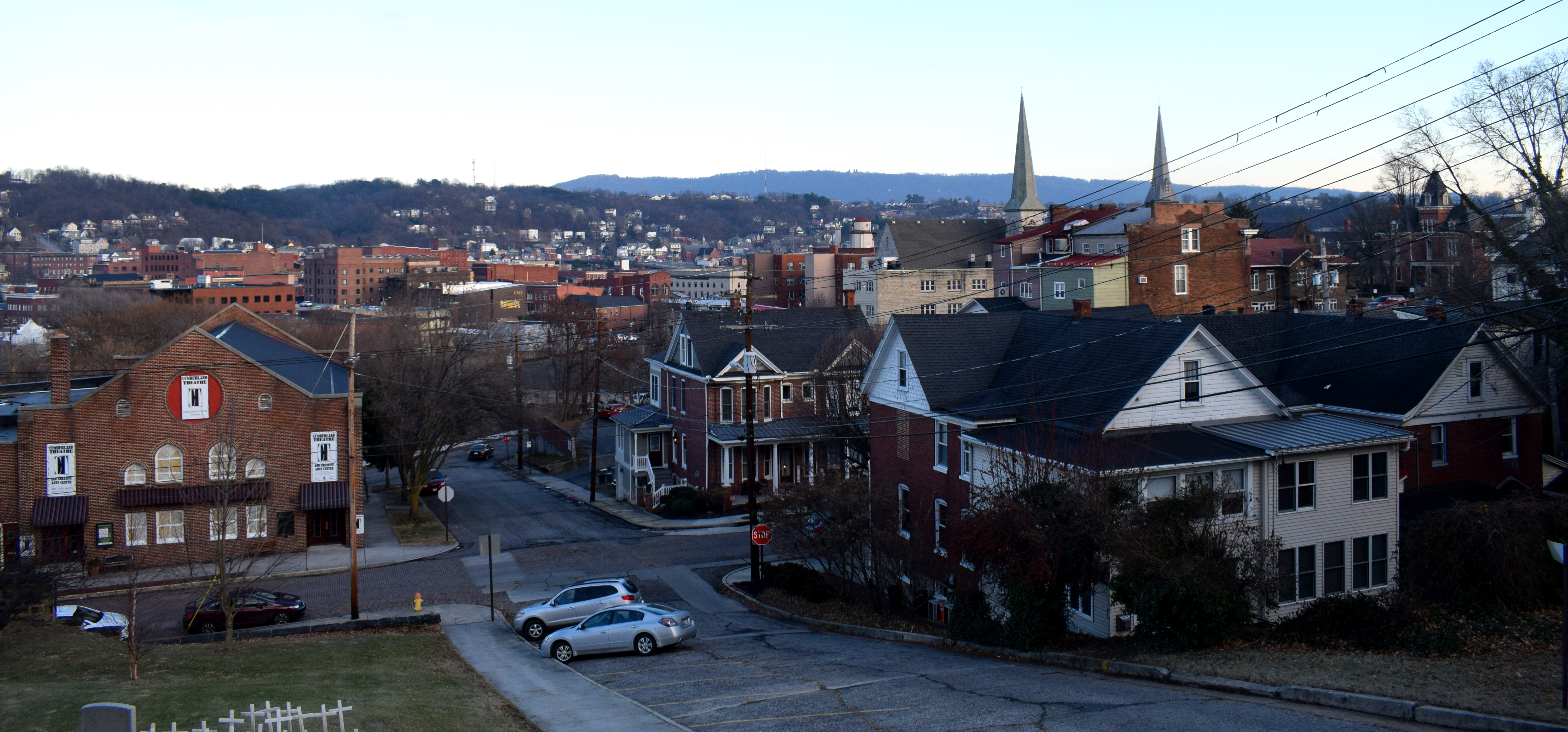 The Allegany County Circuit Court, built in 1841.
The Allegany County Circuit Court, built in 1841.
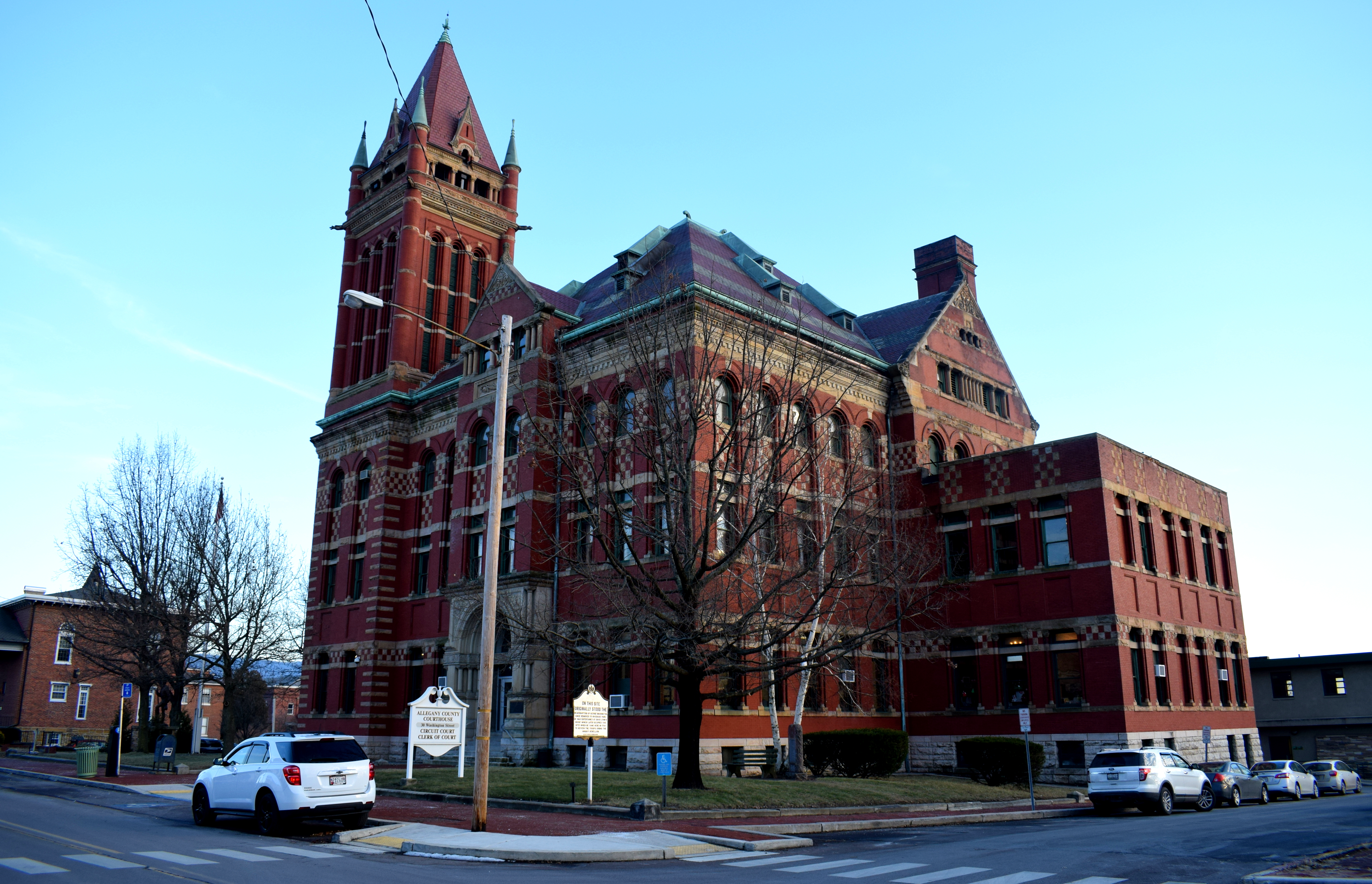 Historic houses in the center, built in the late 1800’s.
Historic houses in the center, built in the late 1800’s.
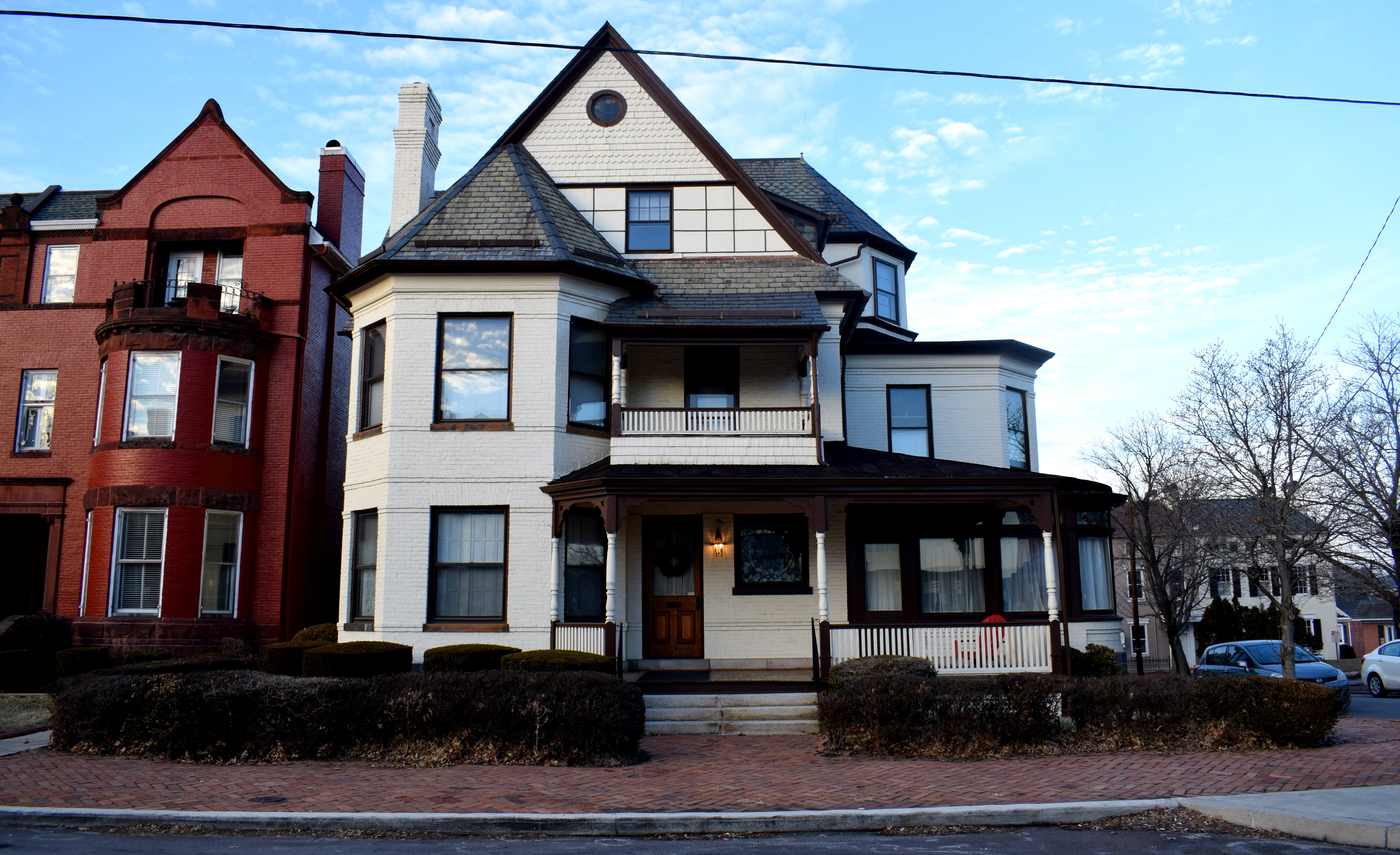
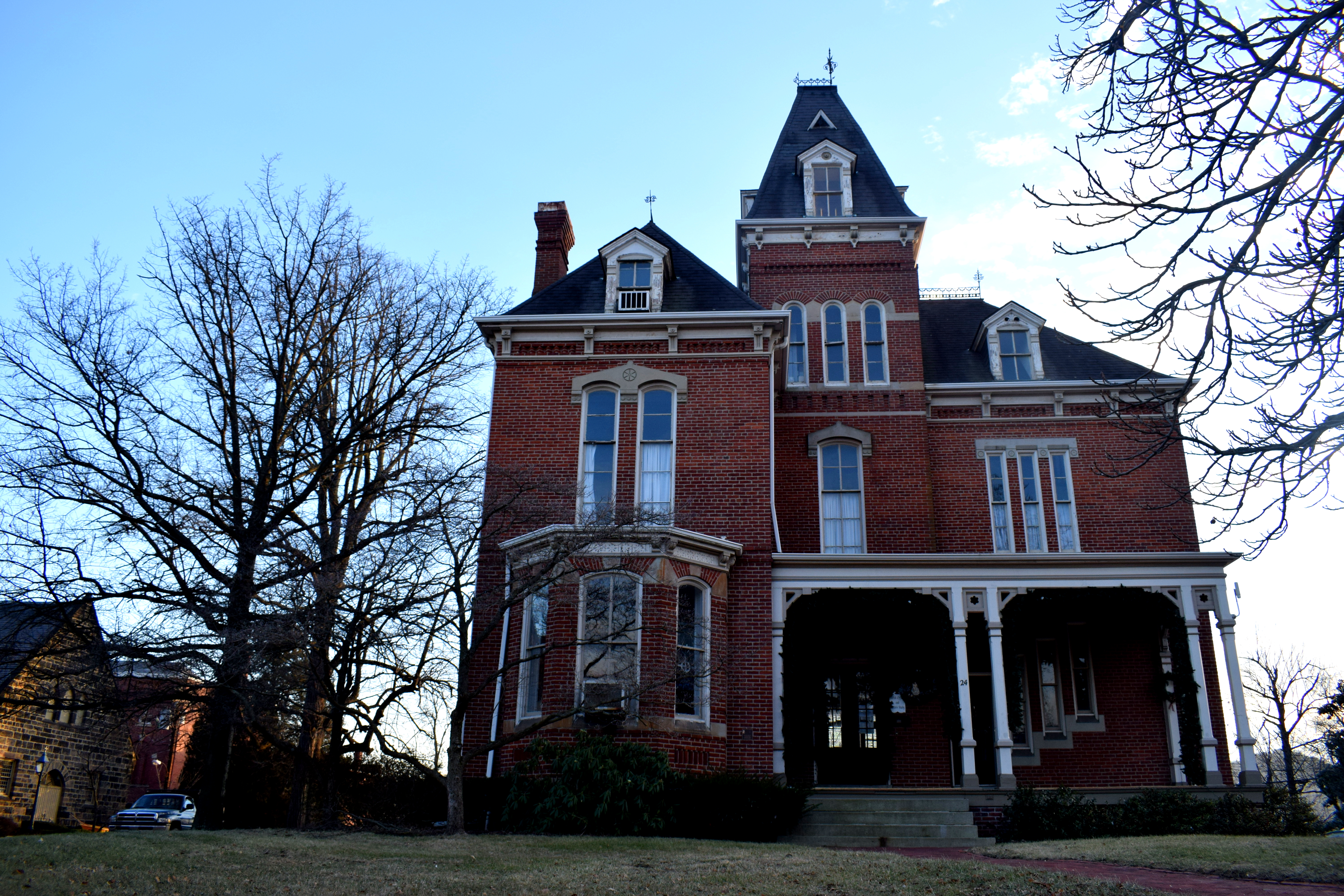 Around the top of the hill.
Around the top of the hill.
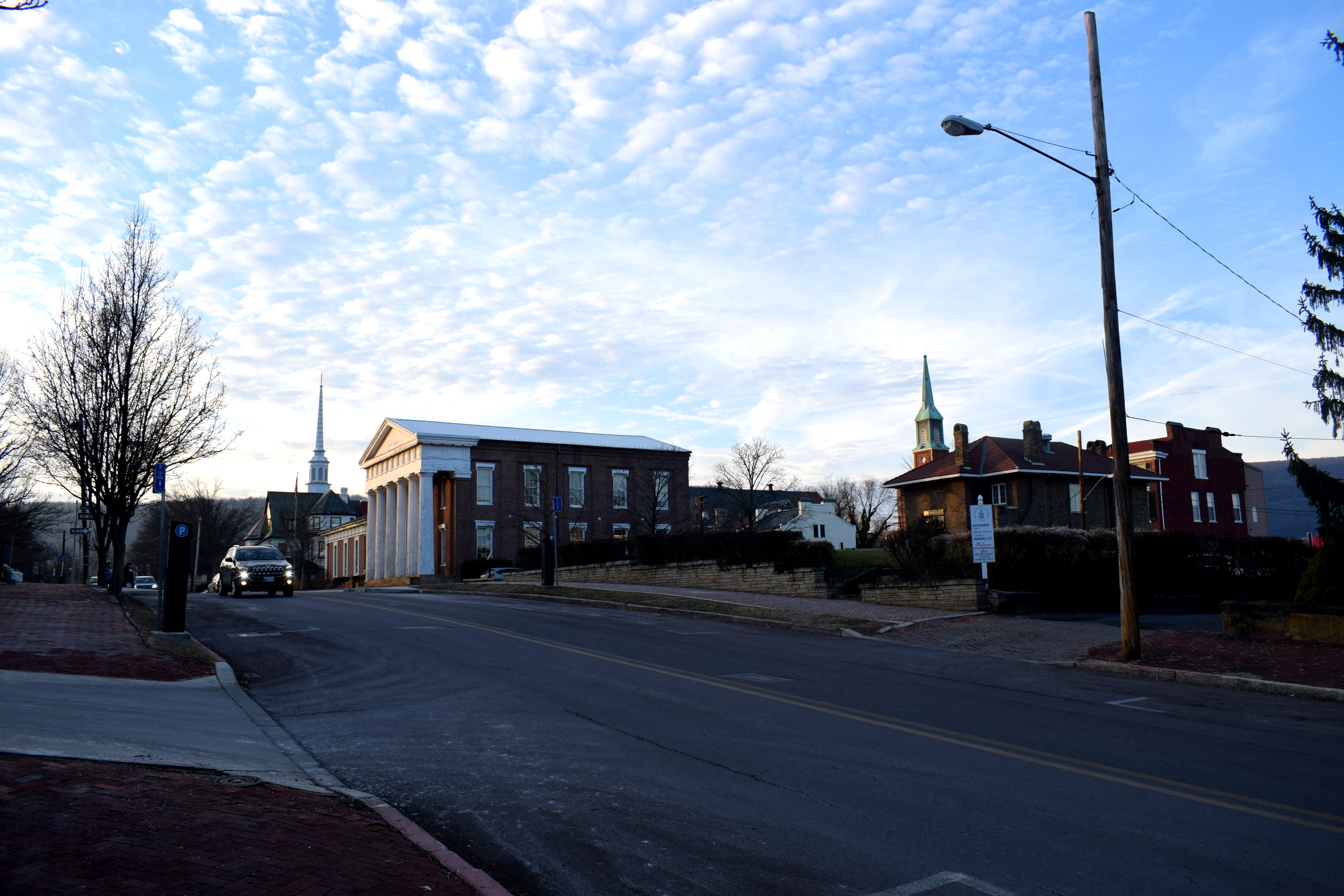 The Emmanuel Episcopal Church in Cumberland, built in 1851. The hilltop on which the church is located was originally a trading post operated by the Ohio Company. Cumberland was a strategic city because of its proximity to the Potomac River, the only waterway that passed through the Appalachian Mountains to the Midwest and Ohio.
The Emmanuel Episcopal Church in Cumberland, built in 1851. The hilltop on which the church is located was originally a trading post operated by the Ohio Company. Cumberland was a strategic city because of its proximity to the Potomac River, the only waterway that passed through the Appalachian Mountains to the Midwest and Ohio.
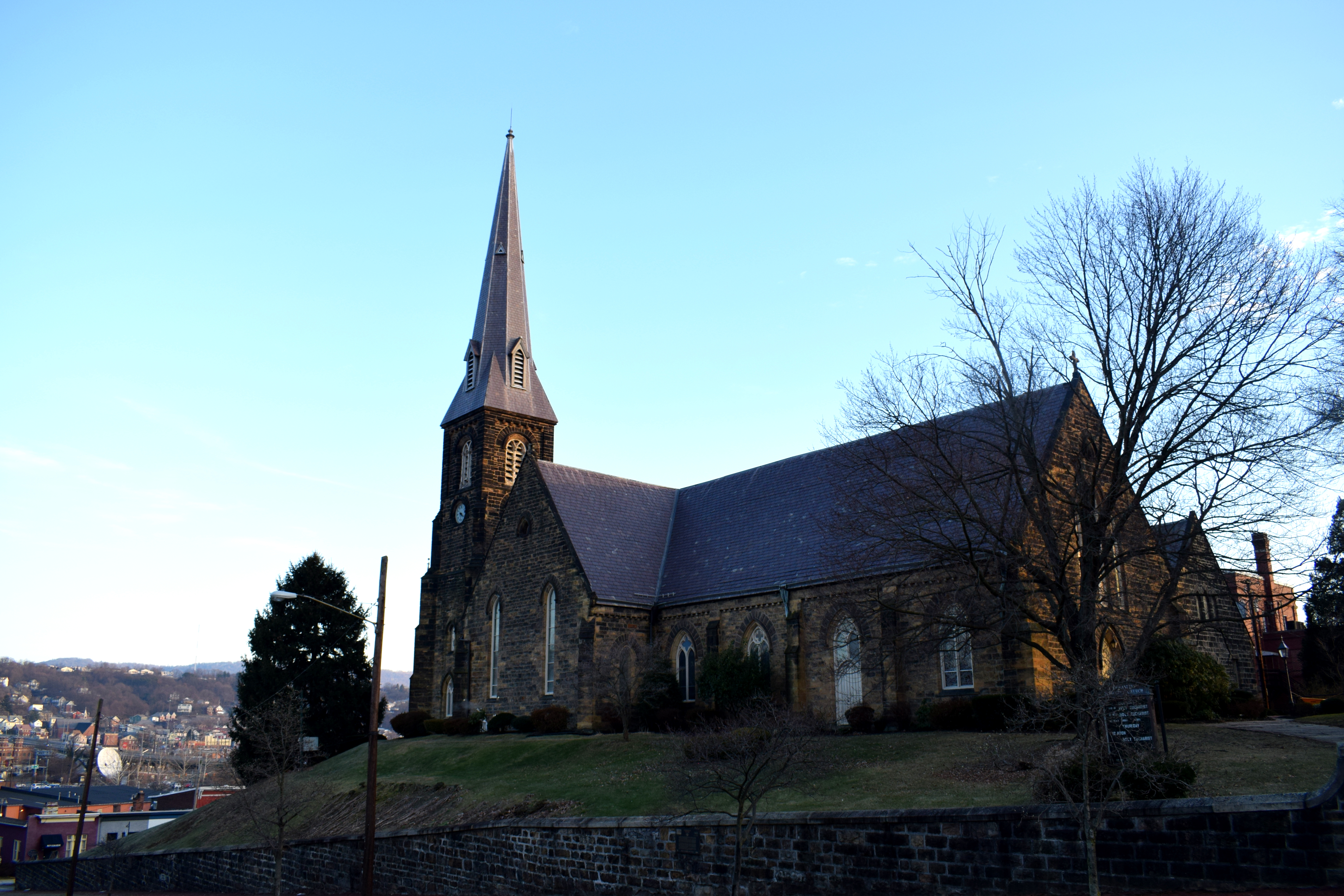 Cumberland’s canal. In the 1800’s canals were the main form of transport in the United States, alongside railroads. Later on highways would develop. In the distance you can see the American interstate highway 68 which passes right by Cumberland, ruining some of the historic views of the city.
Cumberland’s canal. In the 1800’s canals were the main form of transport in the United States, alongside railroads. Later on highways would develop. In the distance you can see the American interstate highway 68 which passes right by Cumberland, ruining some of the historic views of the city.
 The Western Maryland railway tracks still divide the city in two.
The Western Maryland railway tracks still divide the city in two.
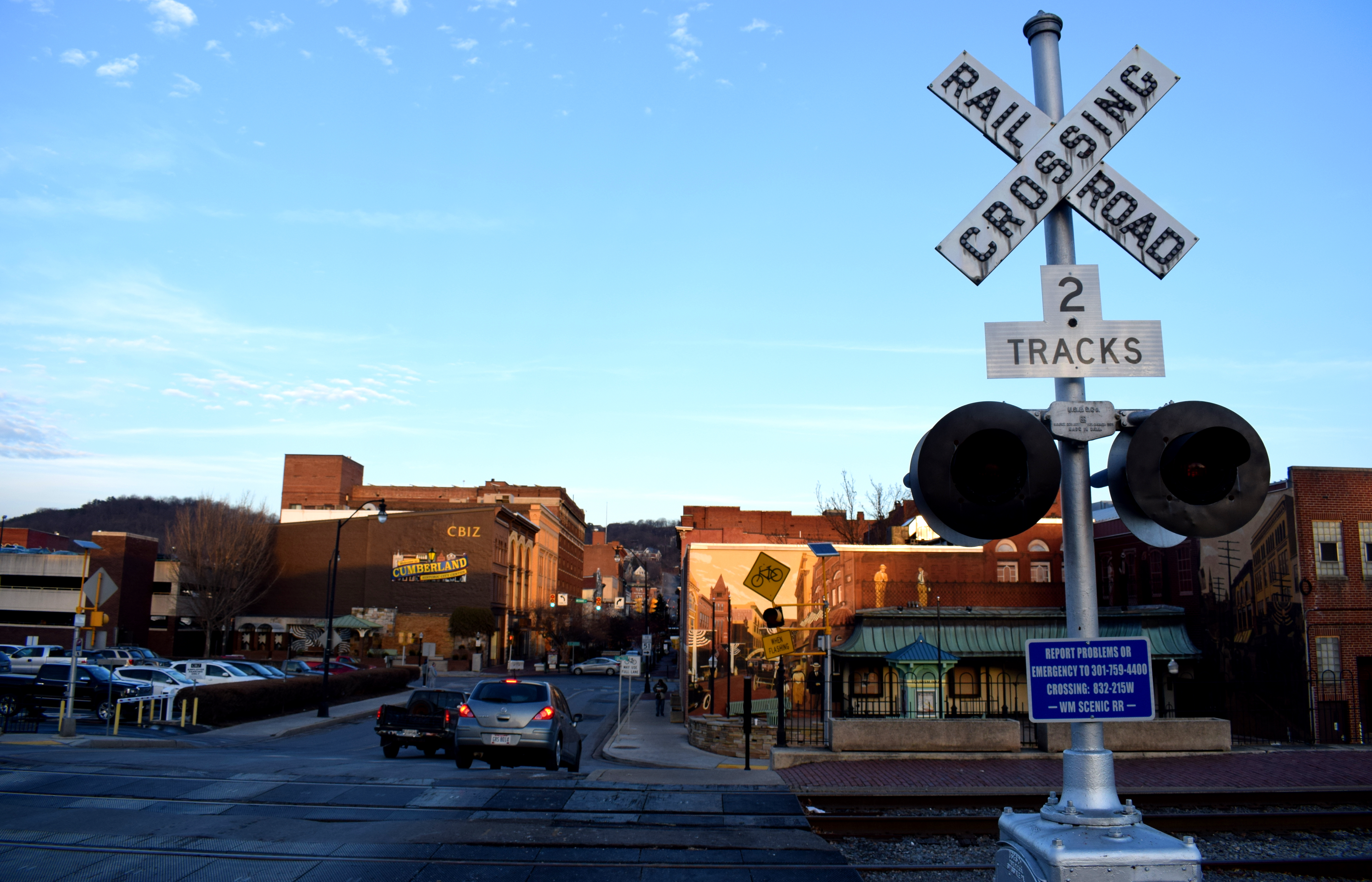 Cumberland’s old train station. Although the old railway tracks are not used on a regular basis anymore, the city recently set up a railway trip for tourists called the Western Maryland Scenic Railroad. The tour follows the old route that the Western Maryland Railway took through the Appalachian mountains in the 19th century and early 20th century, connecting Cumberland with the small town of Frostburg. It allows people to get a sense of what it used to be like to travel in the United States by rail before cars took over.
Cumberland’s old train station. Although the old railway tracks are not used on a regular basis anymore, the city recently set up a railway trip for tourists called the Western Maryland Scenic Railroad. The tour follows the old route that the Western Maryland Railway took through the Appalachian mountains in the 19th century and early 20th century, connecting Cumberland with the small town of Frostburg. It allows people to get a sense of what it used to be like to travel in the United States by rail before cars took over.
 The railway station today.
The railway station today.
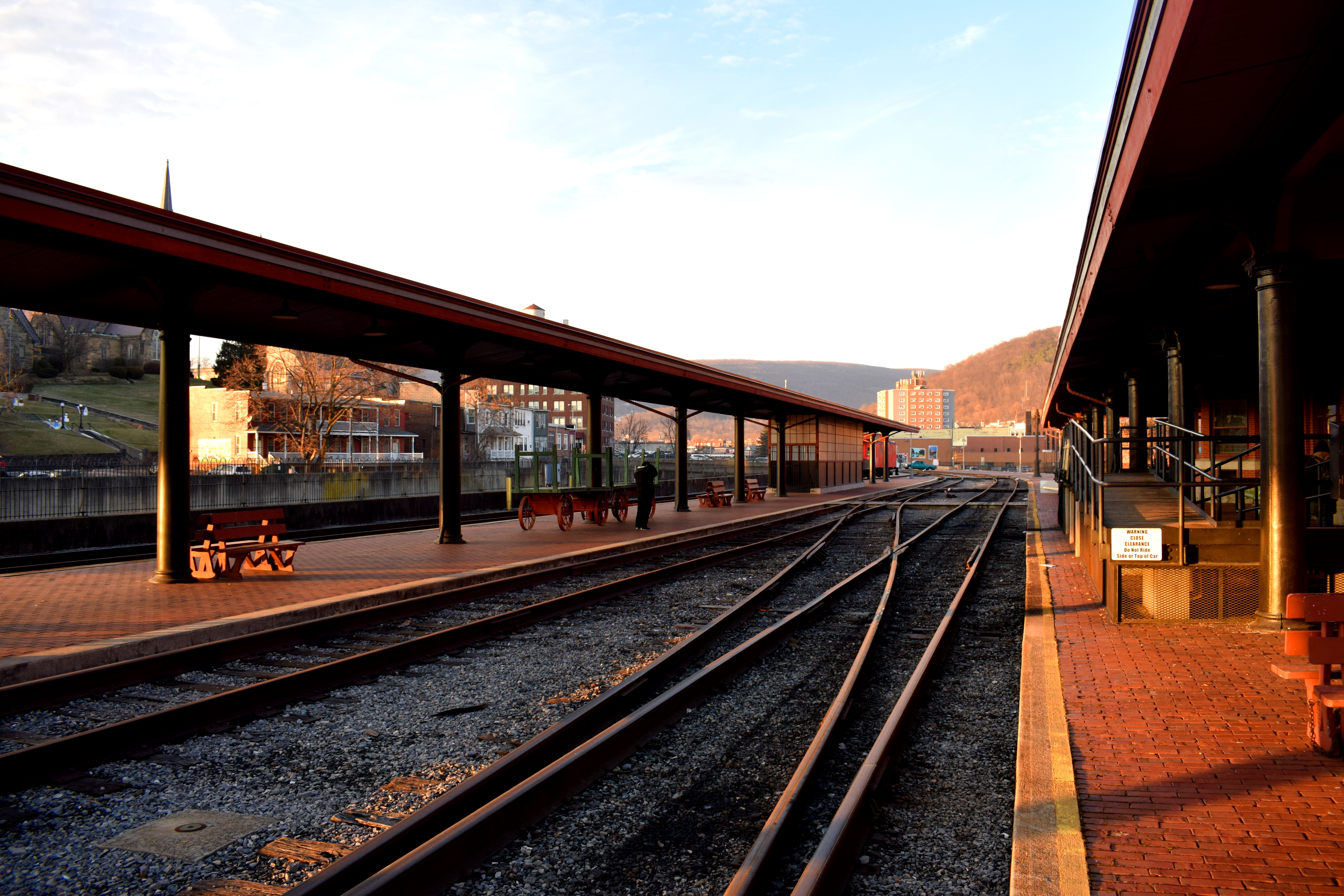
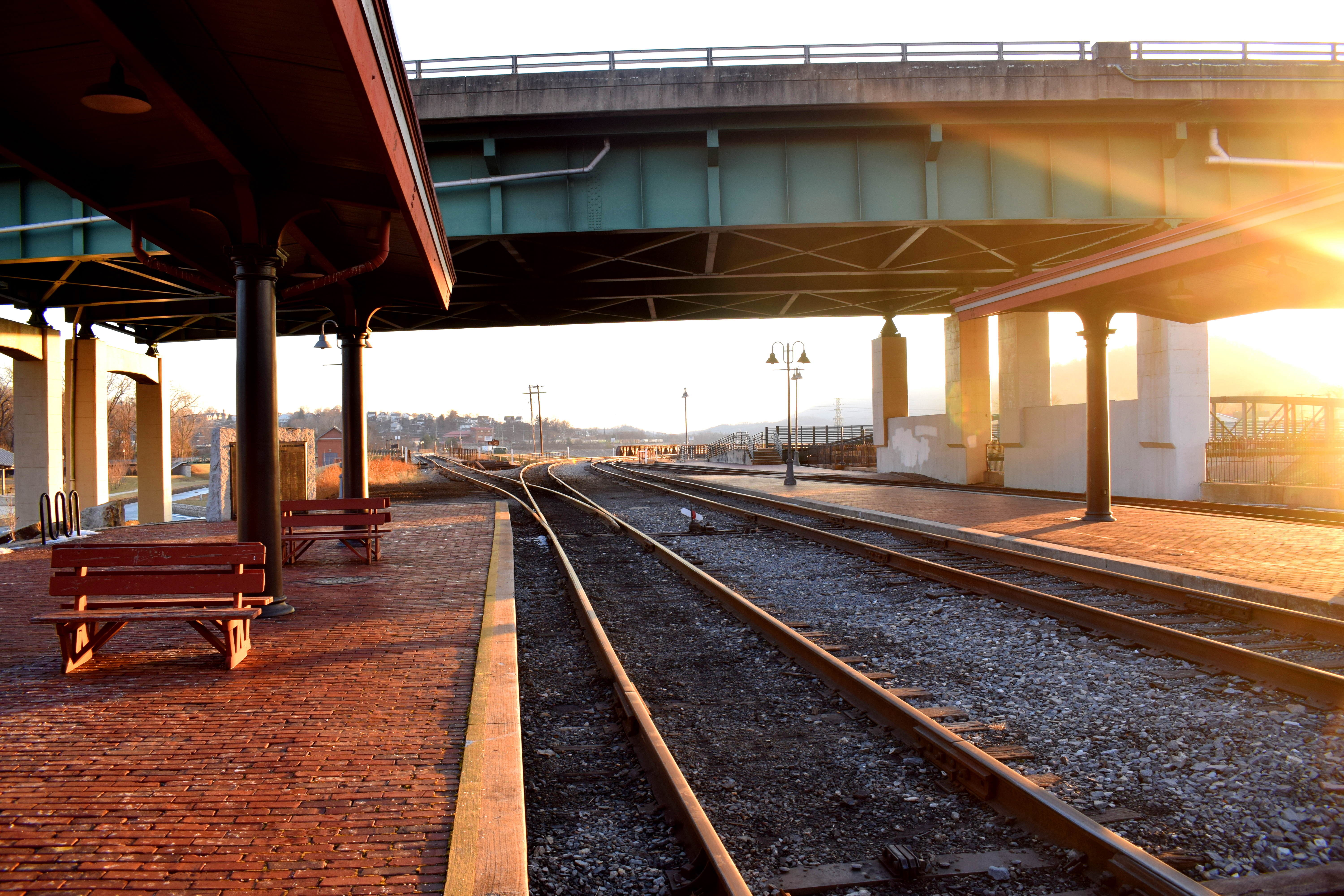 Baltimore Street, Cumberland’s historic downtown area. Baltimore Street is a full-scale pedestrian street closed off for cars, just like they have in Europe.
Baltimore Street, Cumberland’s historic downtown area. Baltimore Street is a full-scale pedestrian street closed off for cars, just like they have in Europe.
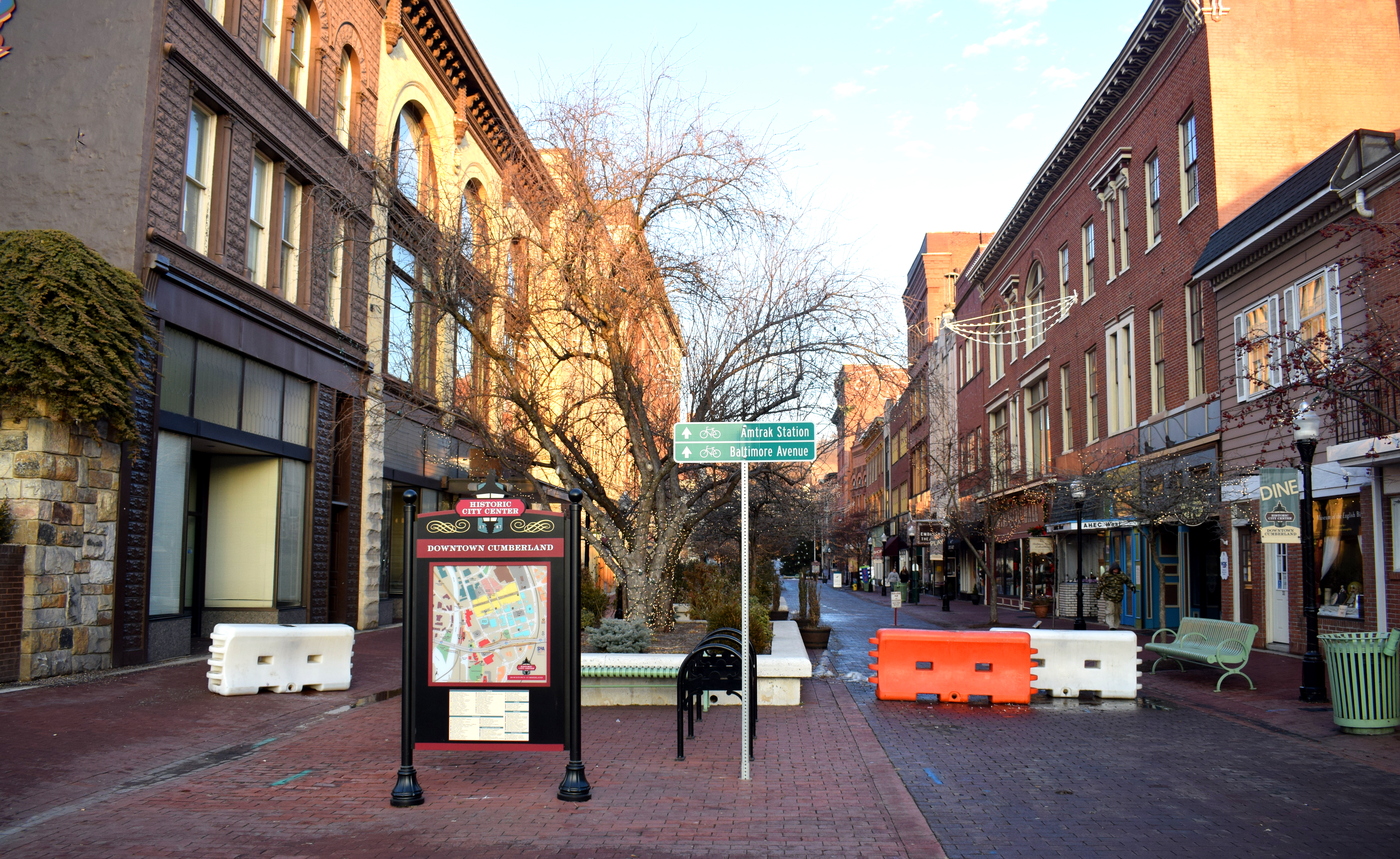 It is a model street other small cities in the United States could replicate such as Hagerstown, Maryland. The street is filled with small local businesses like antique shops, stores selling teas, toys, barbershops, cafes, bars and restaurants.
It is a model street other small cities in the United States could replicate such as Hagerstown, Maryland. The street is filled with small local businesses like antique shops, stores selling teas, toys, barbershops, cafes, bars and restaurants.
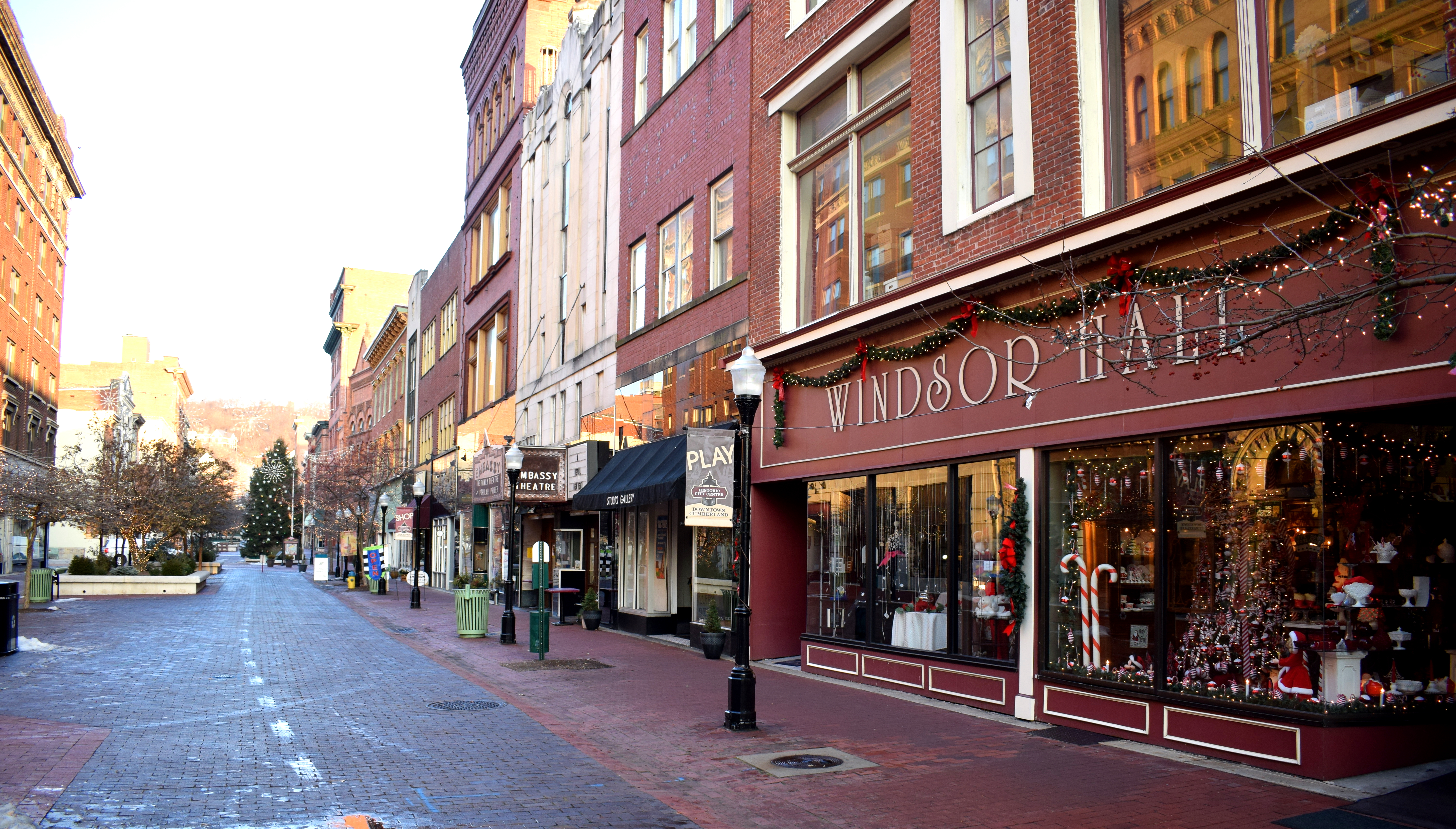 There was even an old school theater on the street with ticket windows on the outside.
There was even an old school theater on the street with ticket windows on the outside.
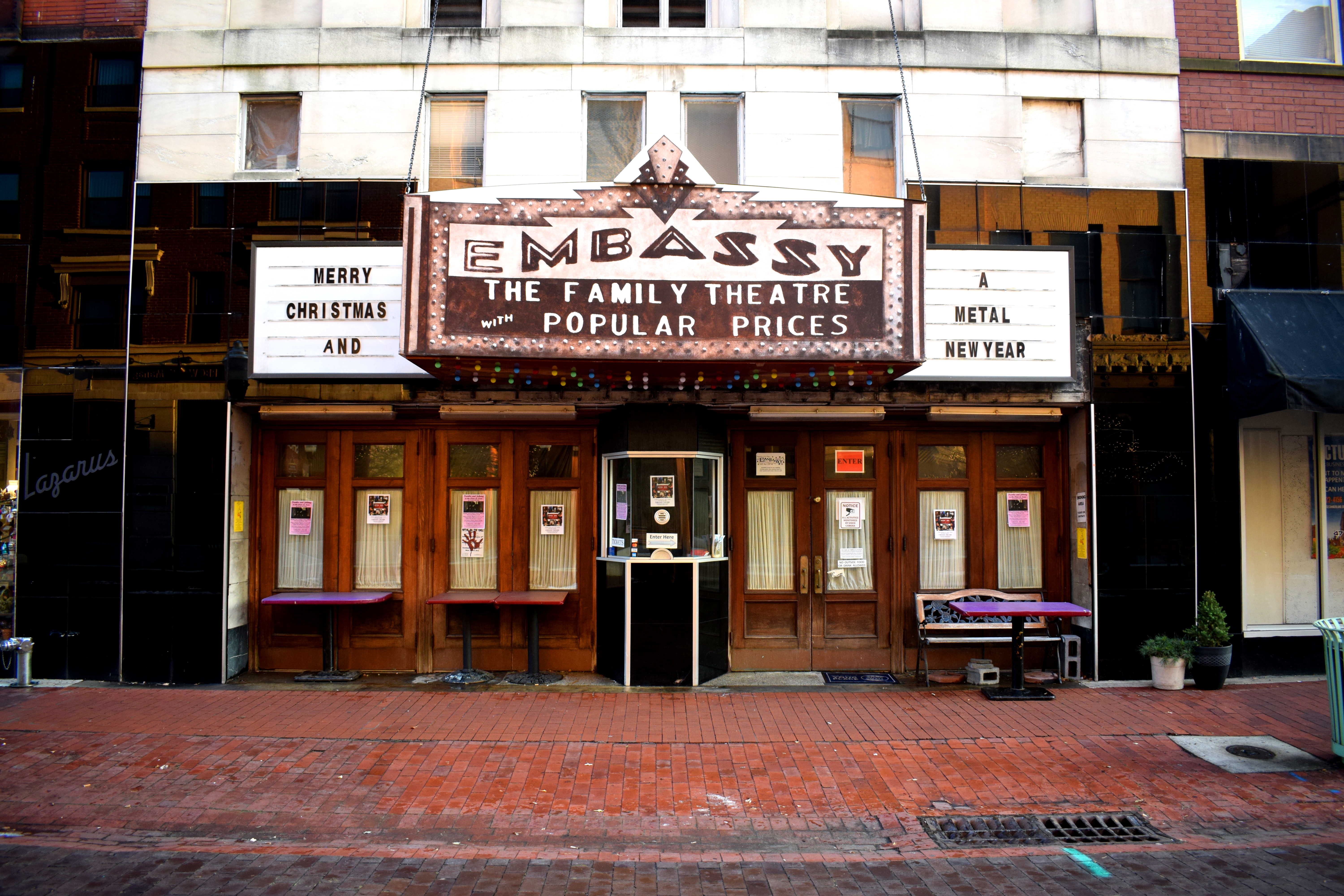
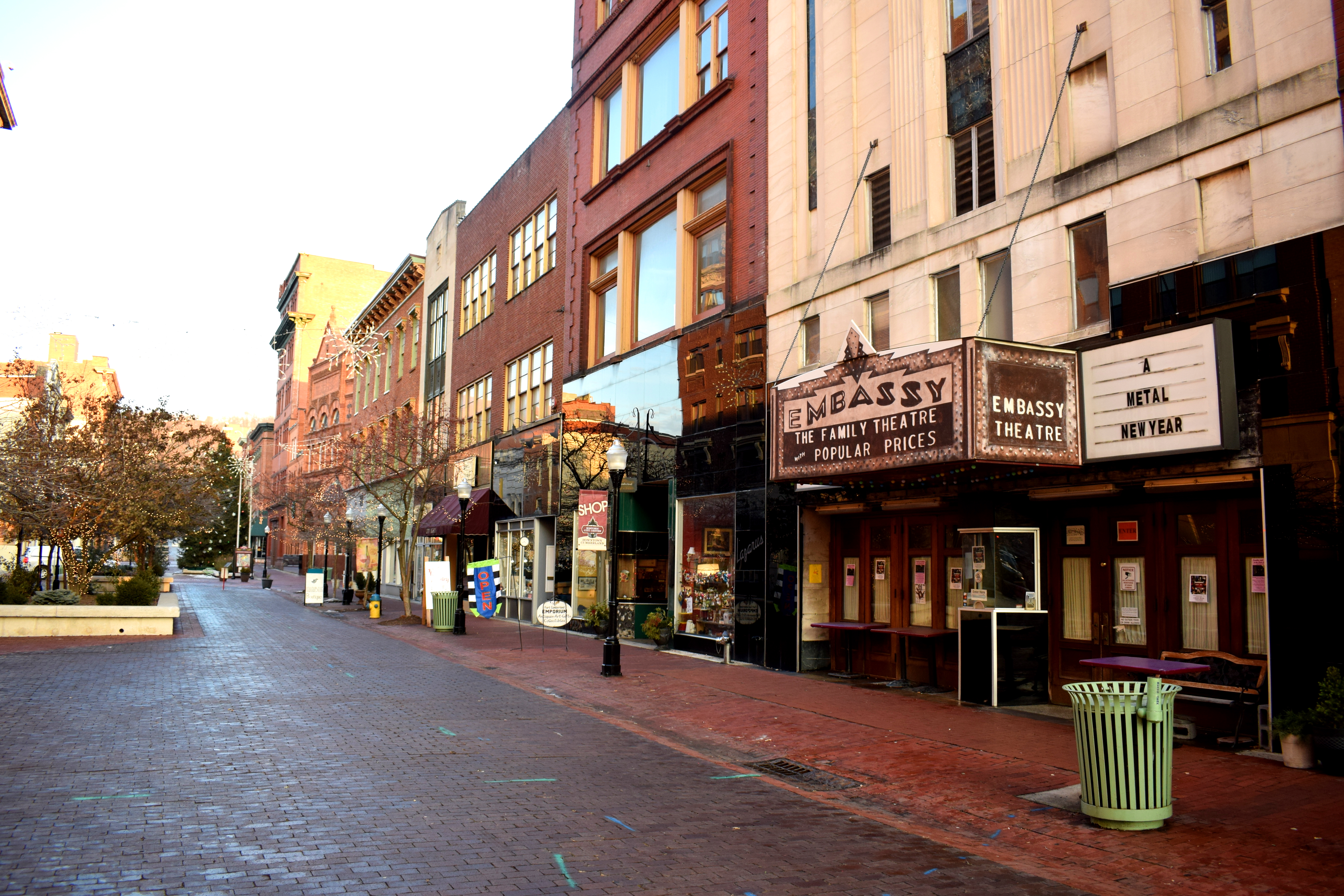 The street had an impressive collection of old 19th century and early 20th century buildings reflecting the prosperity that was once present in the city.
The street had an impressive collection of old 19th century and early 20th century buildings reflecting the prosperity that was once present in the city.
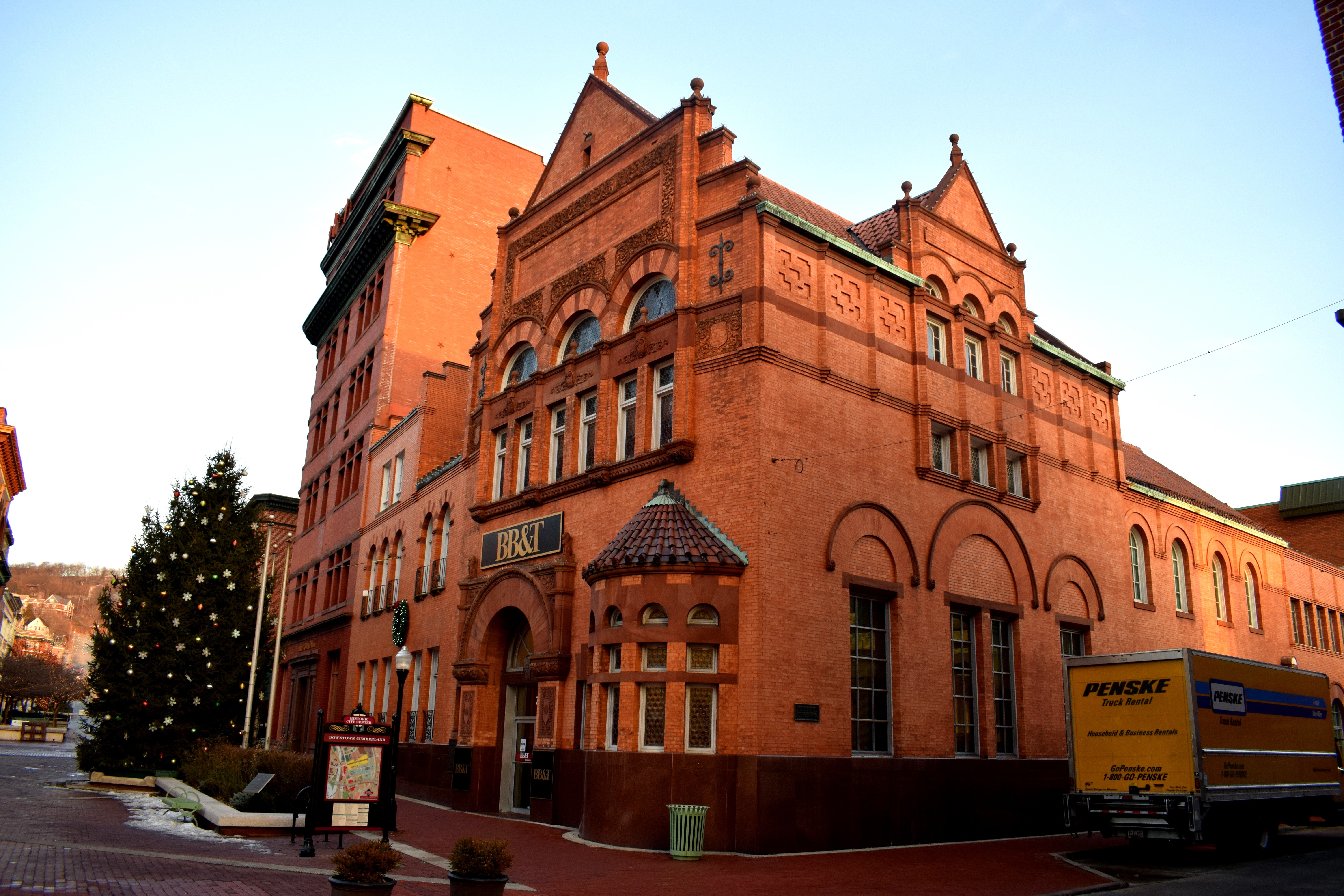
 The Susquehanna Bank Building, the second oldest bank in Maryland, chartered in 1812.
The Susquehanna Bank Building, the second oldest bank in Maryland, chartered in 1812.
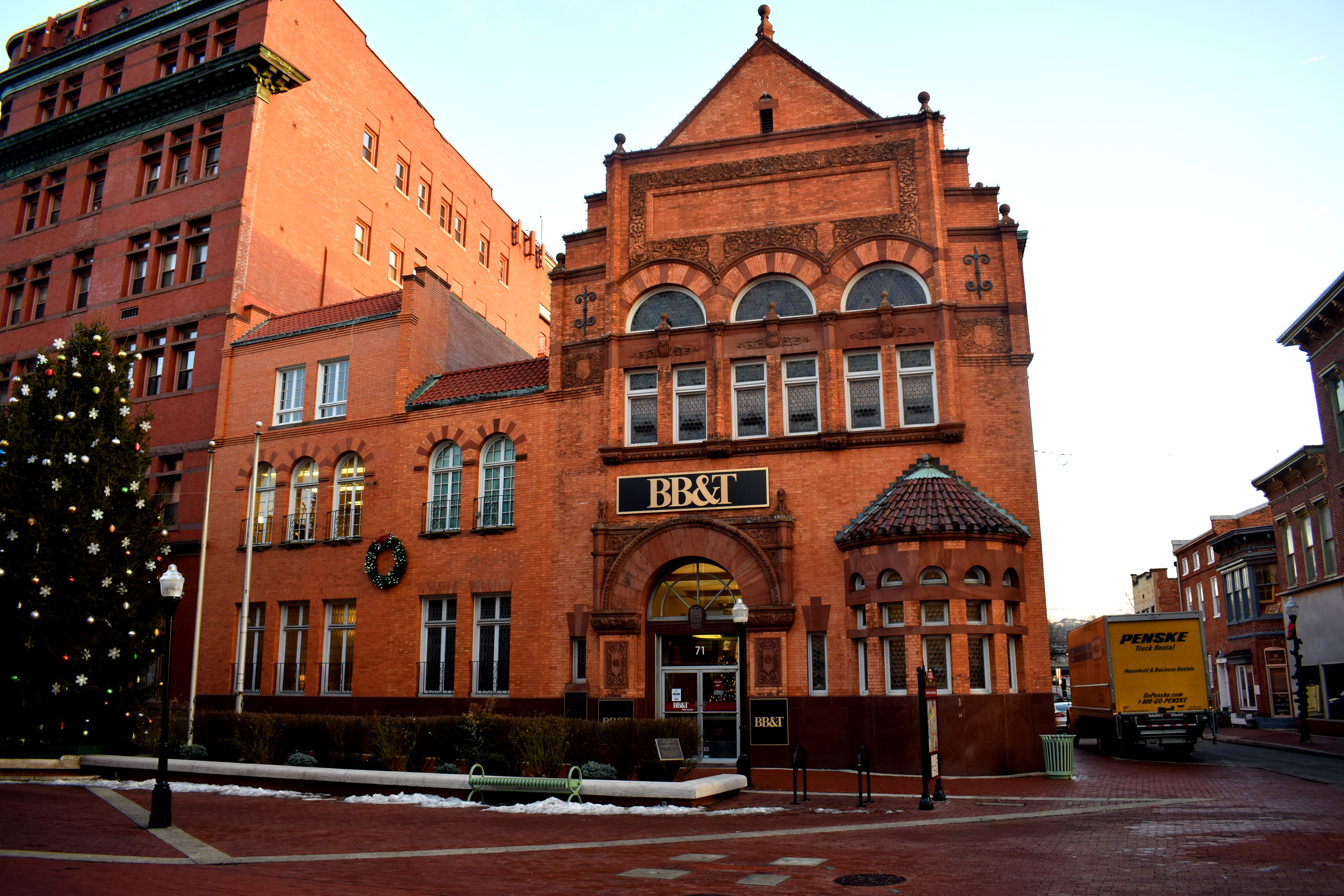 For most of the 20th century the street was open to traffic, but in the 1970’s the city decided to close it off for cars and turn it into a full scale pedestrian zone.
For most of the 20th century the street was open to traffic, but in the 1970’s the city decided to close it off for cars and turn it into a full scale pedestrian zone.
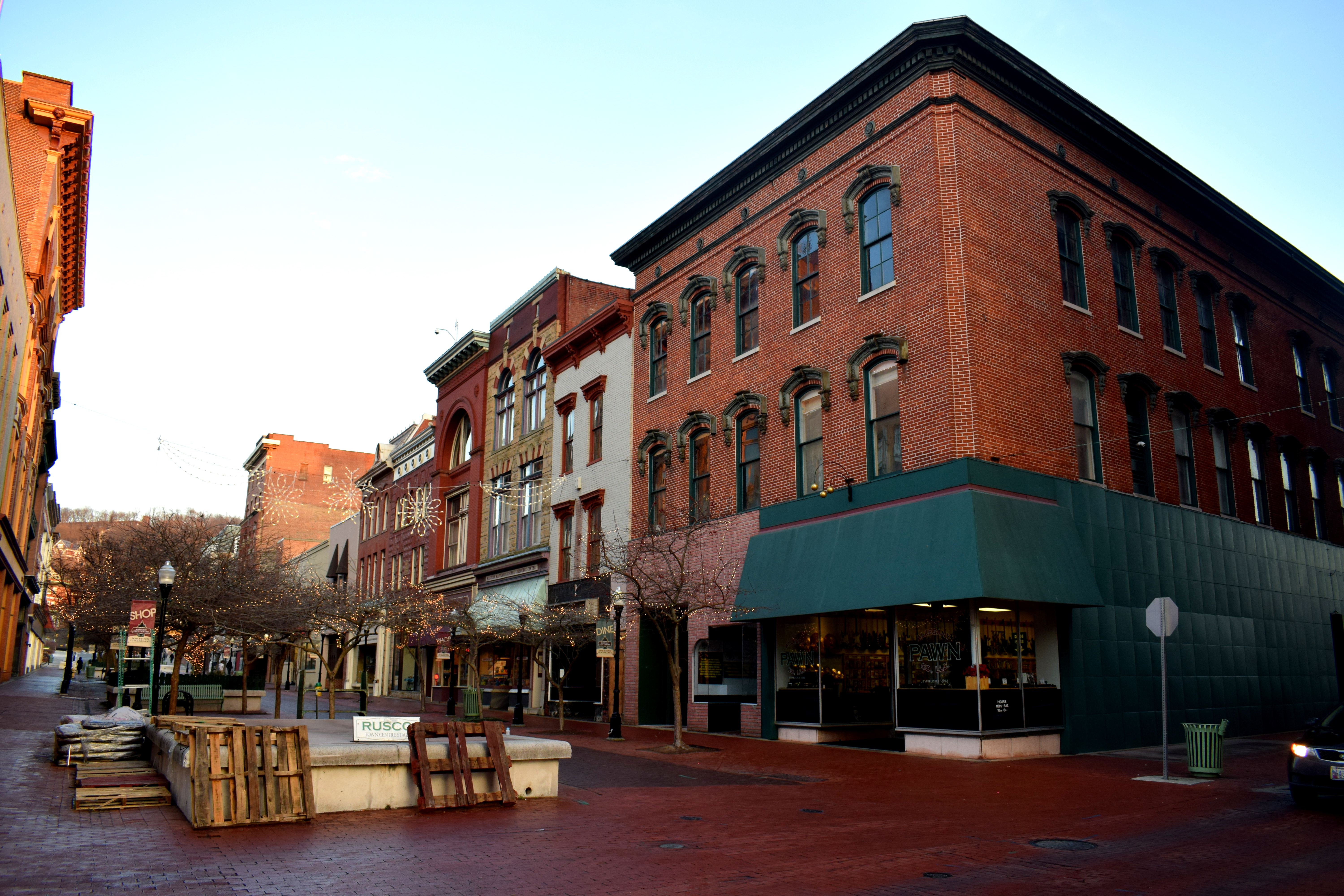 Today it is a perfect example of how American cities can convert their central districts into beautiful pedestrian areas and capture the same vibrancy that European cities have.
Today it is a perfect example of how American cities can convert their central districts into beautiful pedestrian areas and capture the same vibrancy that European cities have.
 Cities like Washington D.C. and New York which pride themselves on being so international haven’t even managed to build any proper functioning pedestrian only streets. It comes down to small cities like Cumberland to take the initiative.
Cities like Washington D.C. and New York which pride themselves on being so international haven’t even managed to build any proper functioning pedestrian only streets. It comes down to small cities like Cumberland to take the initiative.
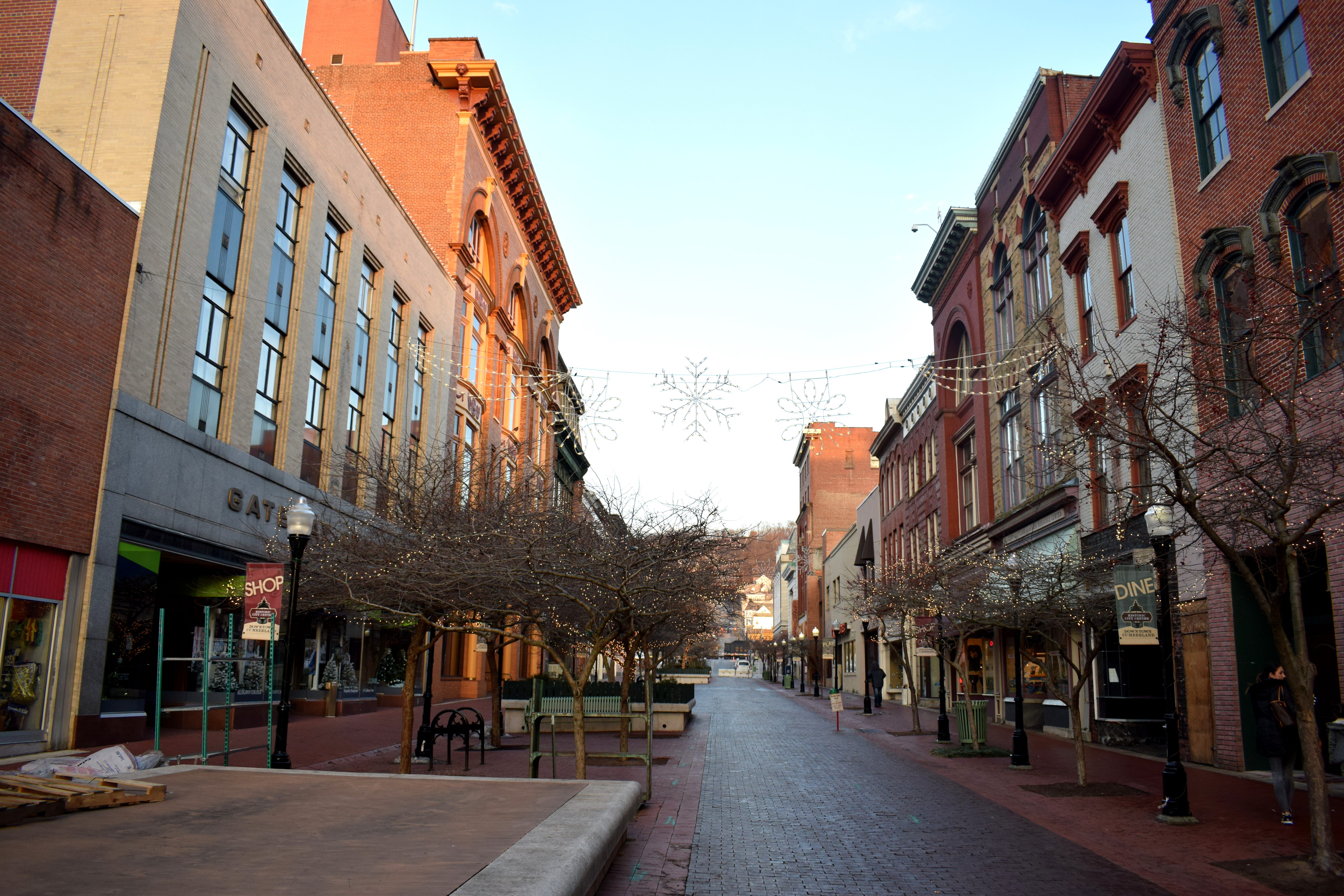 One problem with the street was that because it was so cold it remained empty with very few people walking. It just goes to show that pedestrianizing streets in the center of cities is not enough to get Americans to stop using cars. One lady even said that some businesses were lobbying to have the street opened up to traffic again, claiming that fewer people visit their stores because they have to park so far away and walk.
One problem with the street was that because it was so cold it remained empty with very few people walking. It just goes to show that pedestrianizing streets in the center of cities is not enough to get Americans to stop using cars. One lady even said that some businesses were lobbying to have the street opened up to traffic again, claiming that fewer people visit their stores because they have to park so far away and walk.
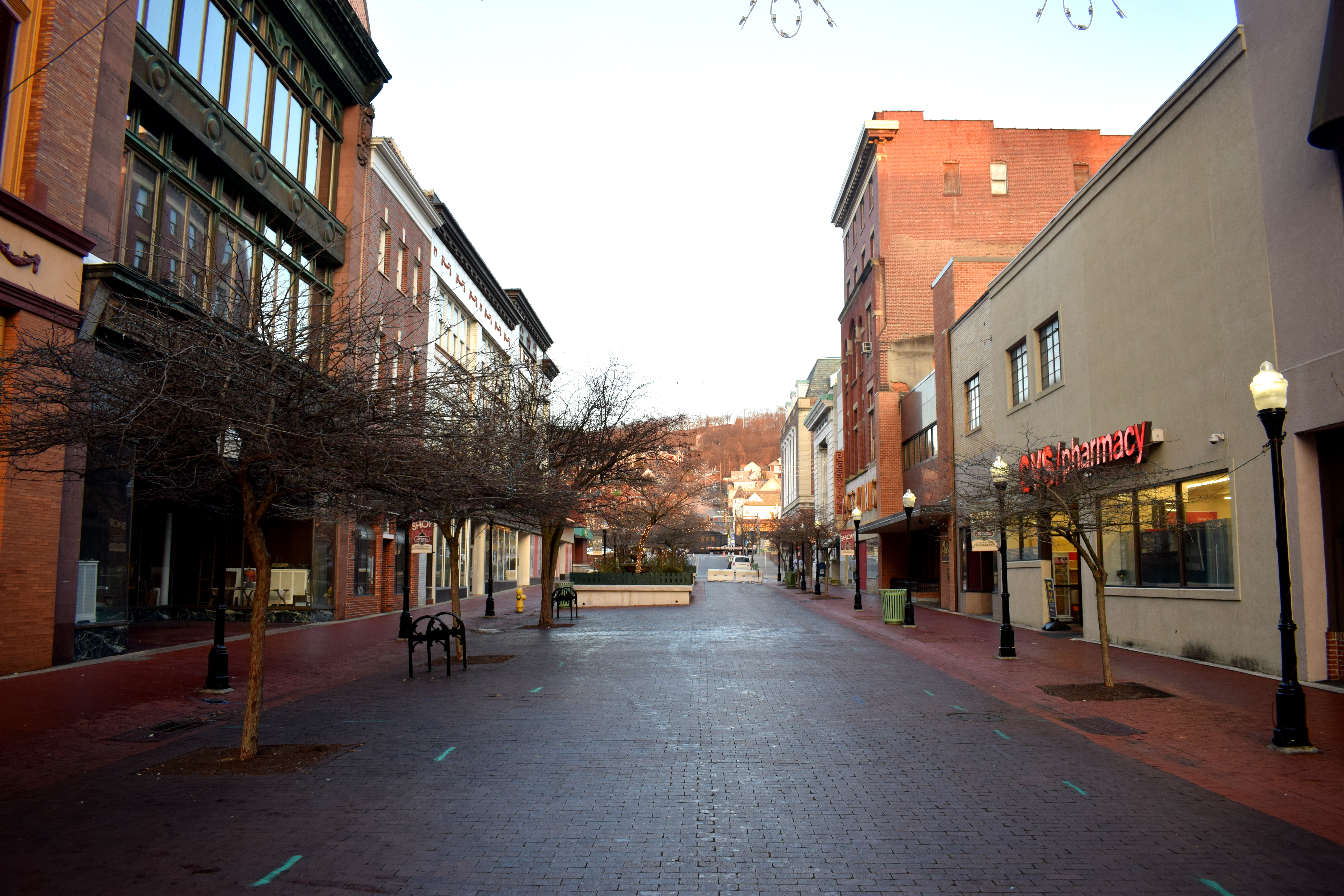 As if to reinforce the point that the street is off limits to cars, roadblocks have been added.
As if to reinforce the point that the street is off limits to cars, roadblocks have been added.
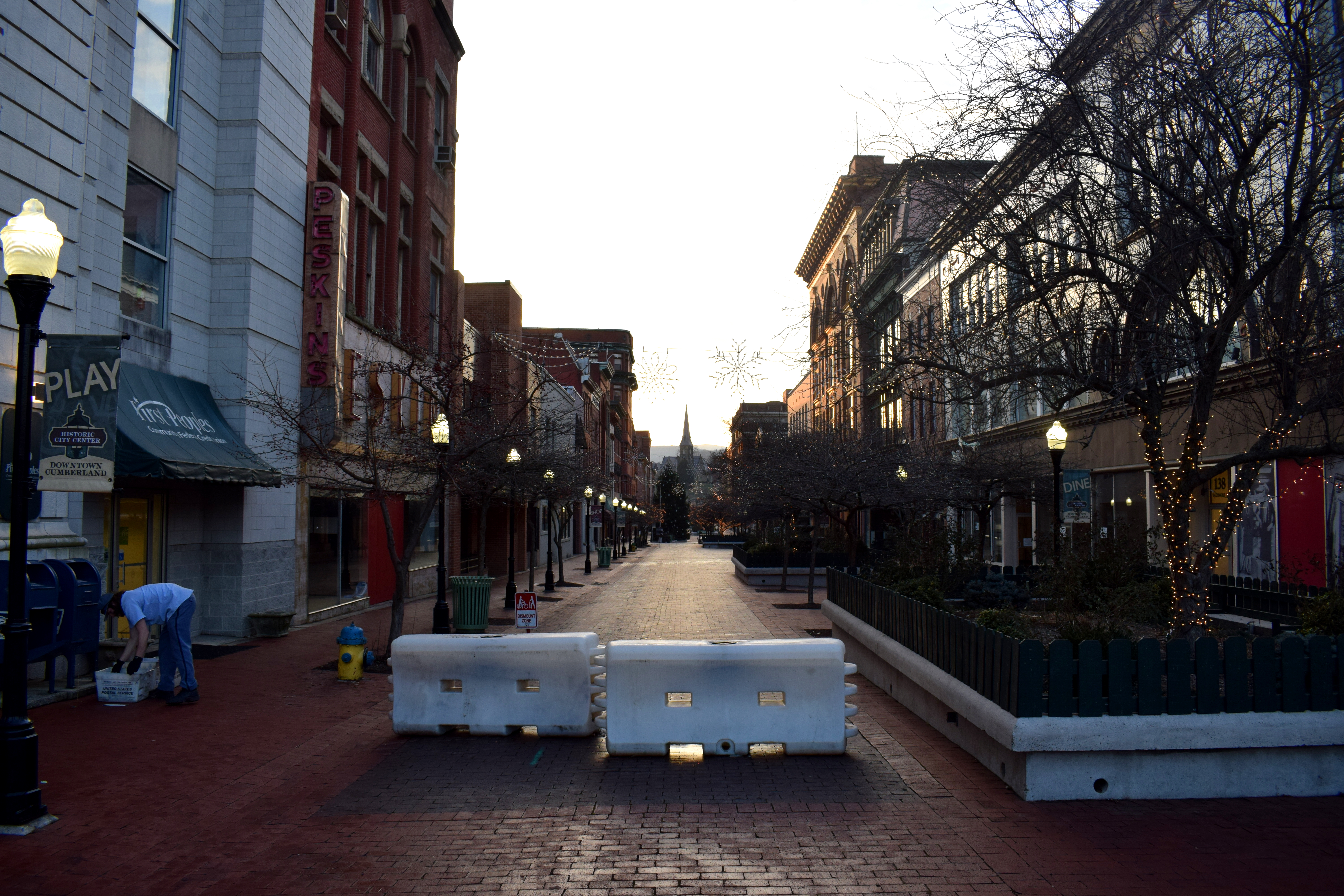 Cyclists are also required to walk their bicycles instead of riding through.
Cyclists are also required to walk their bicycles instead of riding through.
 Despite some drawbacks, Baltimore Street remains a major achievement and can be cited as an example of how cities can successfully pedestrianize their central districts and create a tourist attraction. Towns like Frederick and Hagerstown in Maryland have similar streets with beautiful buildings but have yet to fully pedestrianize them. They should follow Cumberland’s example.
Despite some drawbacks, Baltimore Street remains a major achievement and can be cited as an example of how cities can successfully pedestrianize their central districts and create a tourist attraction. Towns like Frederick and Hagerstown in Maryland have similar streets with beautiful buildings but have yet to fully pedestrianize them. They should follow Cumberland’s example.
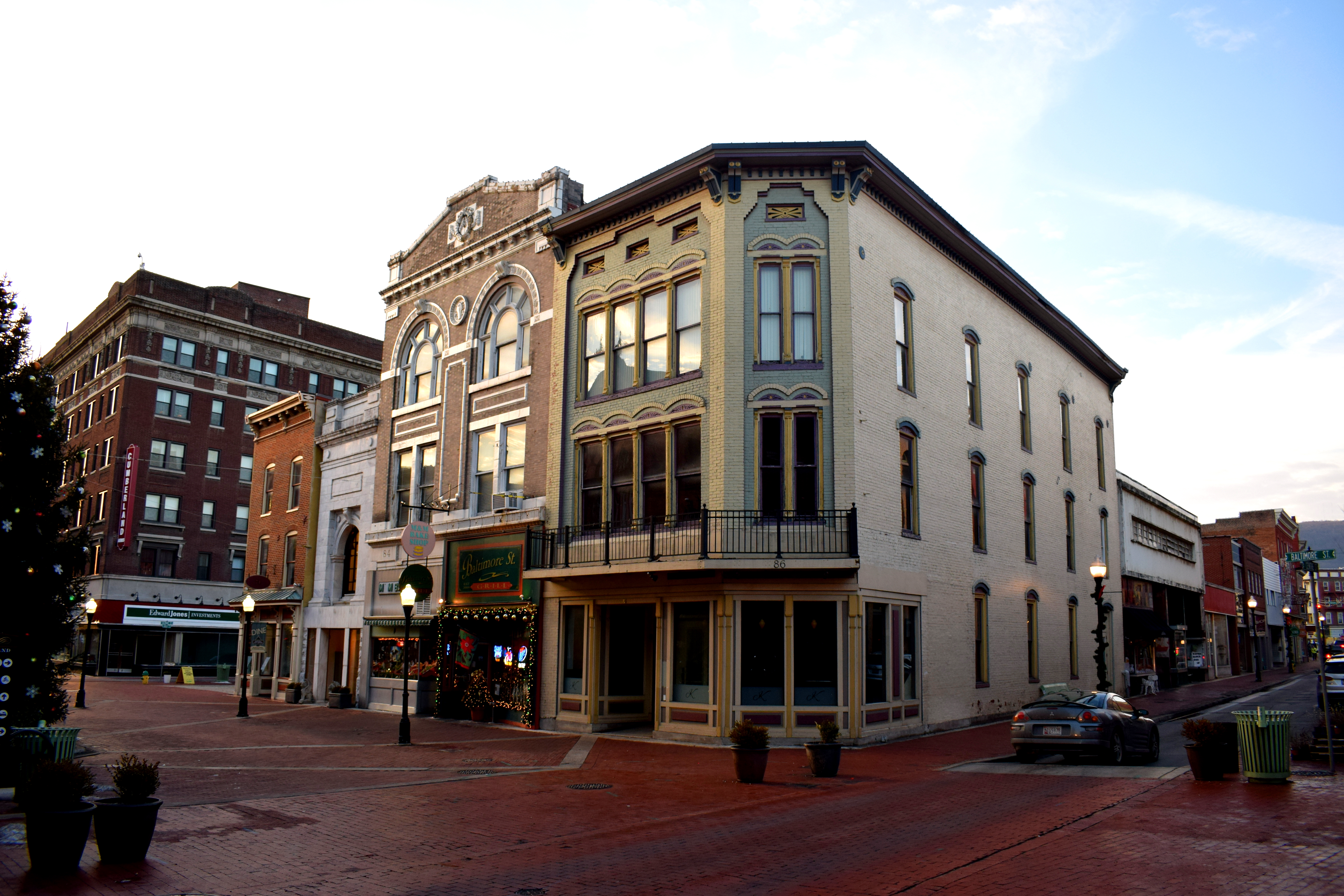 Examples of local businesses on the street. A local bar and bakery.
Examples of local businesses on the street. A local bar and bakery.
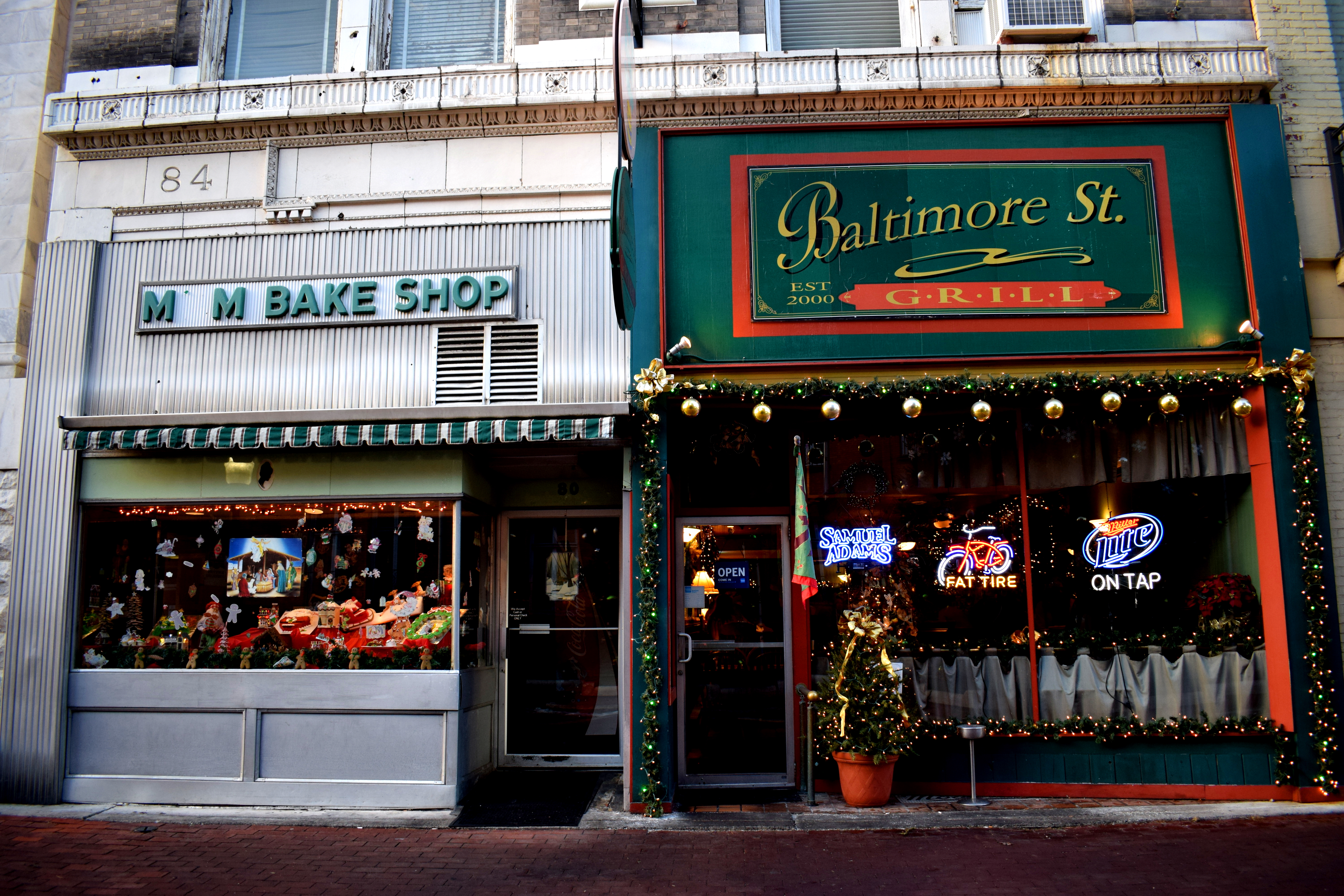 A guitar shop.
A guitar shop.
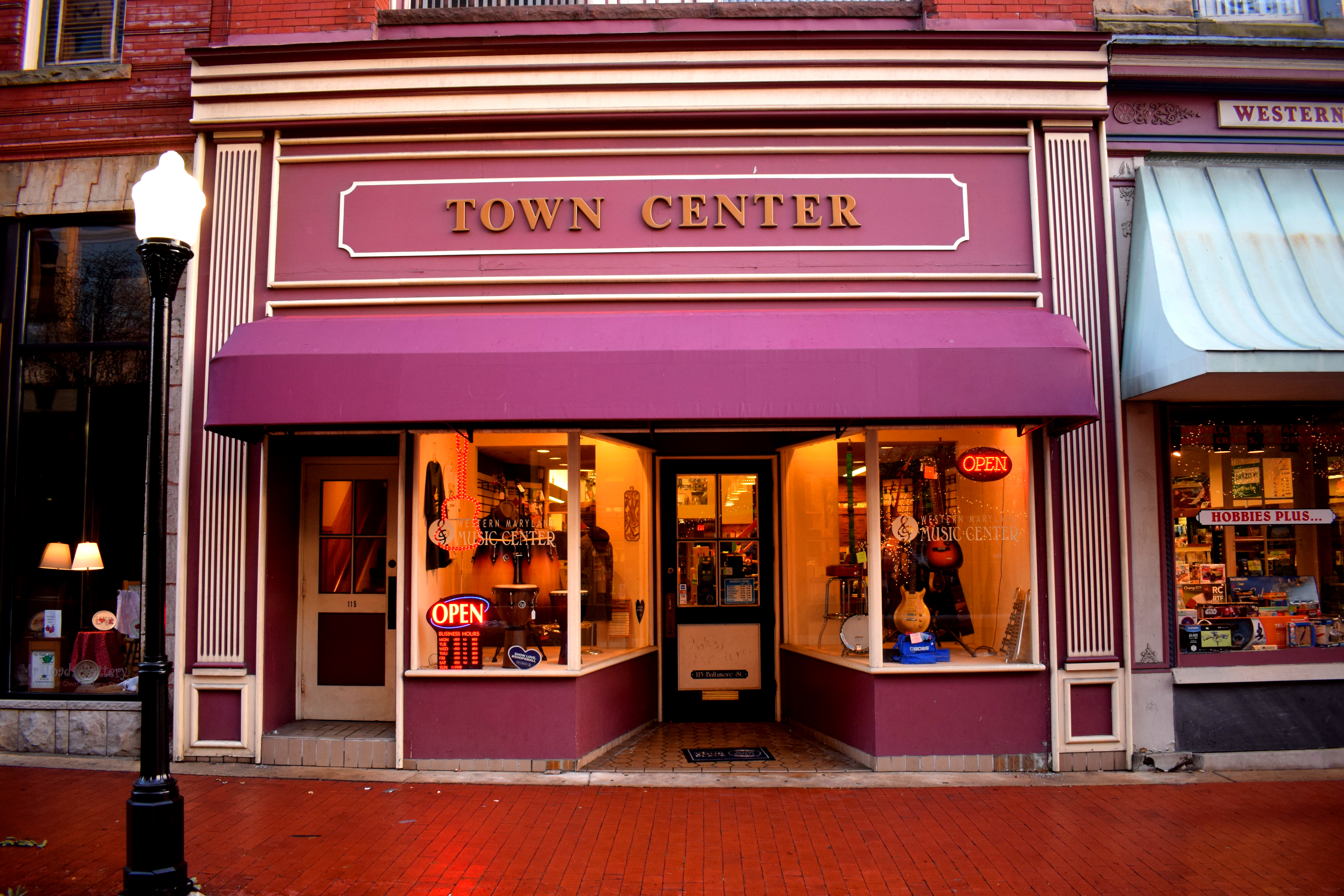 The Embassy Theater again.
The Embassy Theater again.
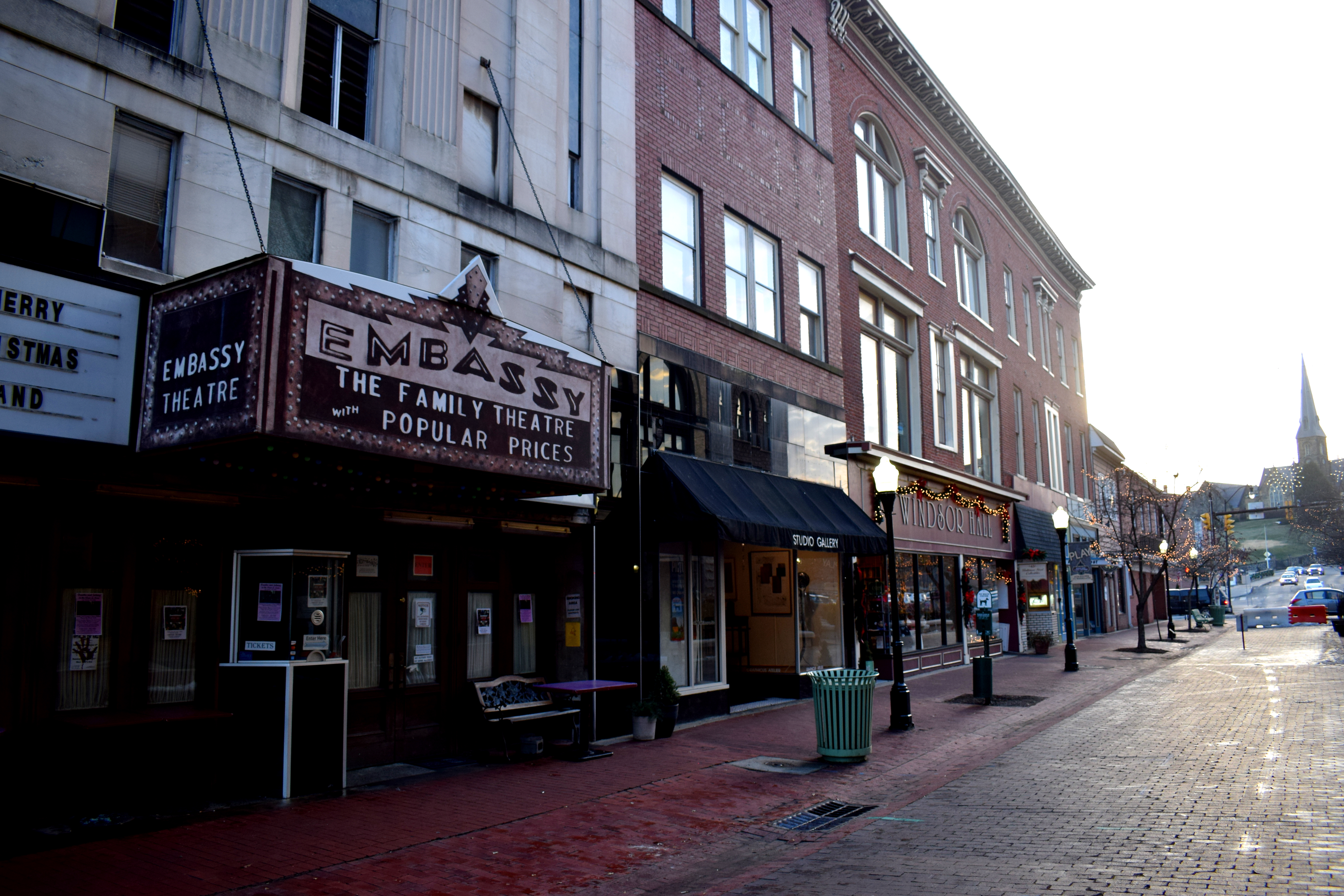 The entrance to the old town.
The entrance to the old town.
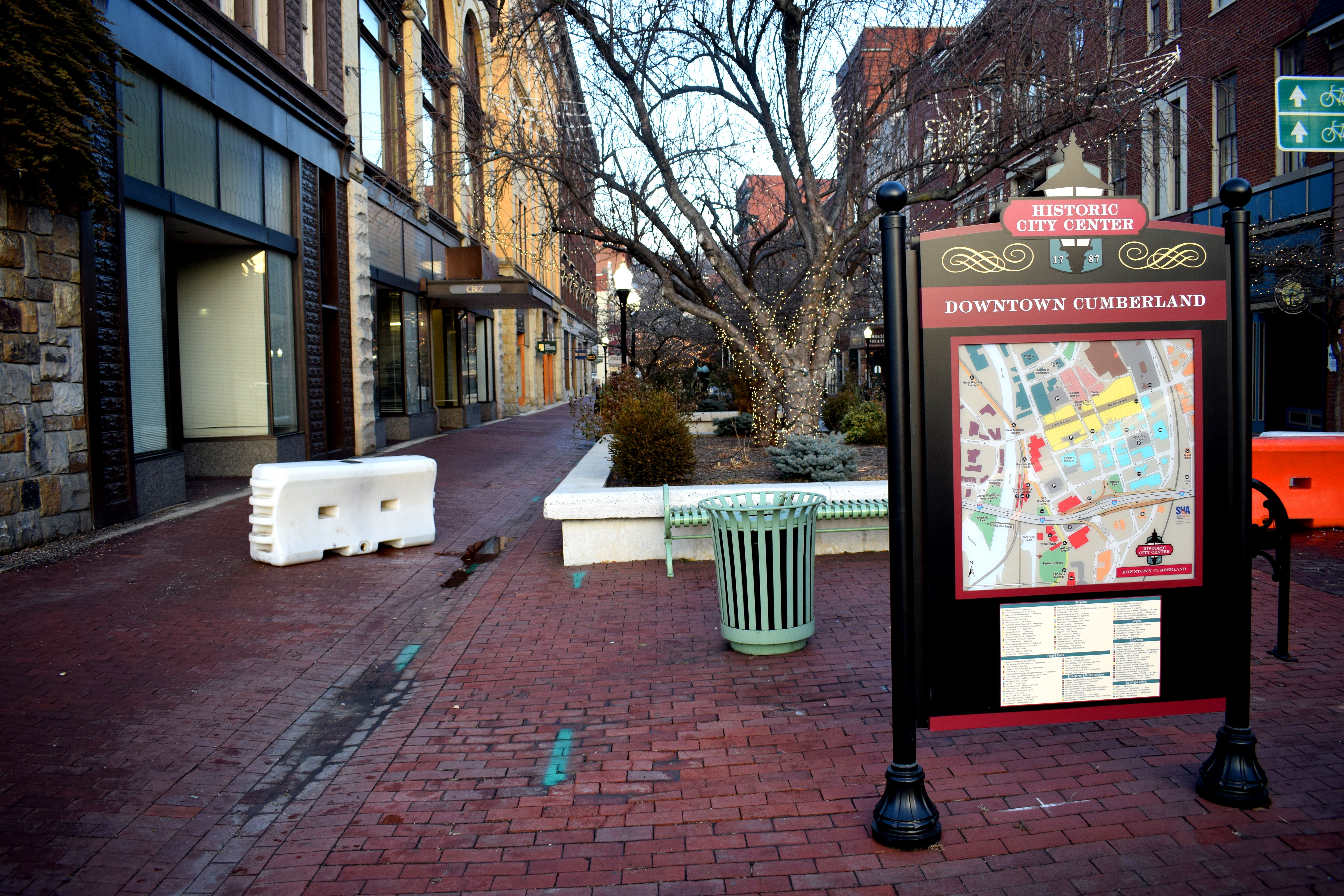
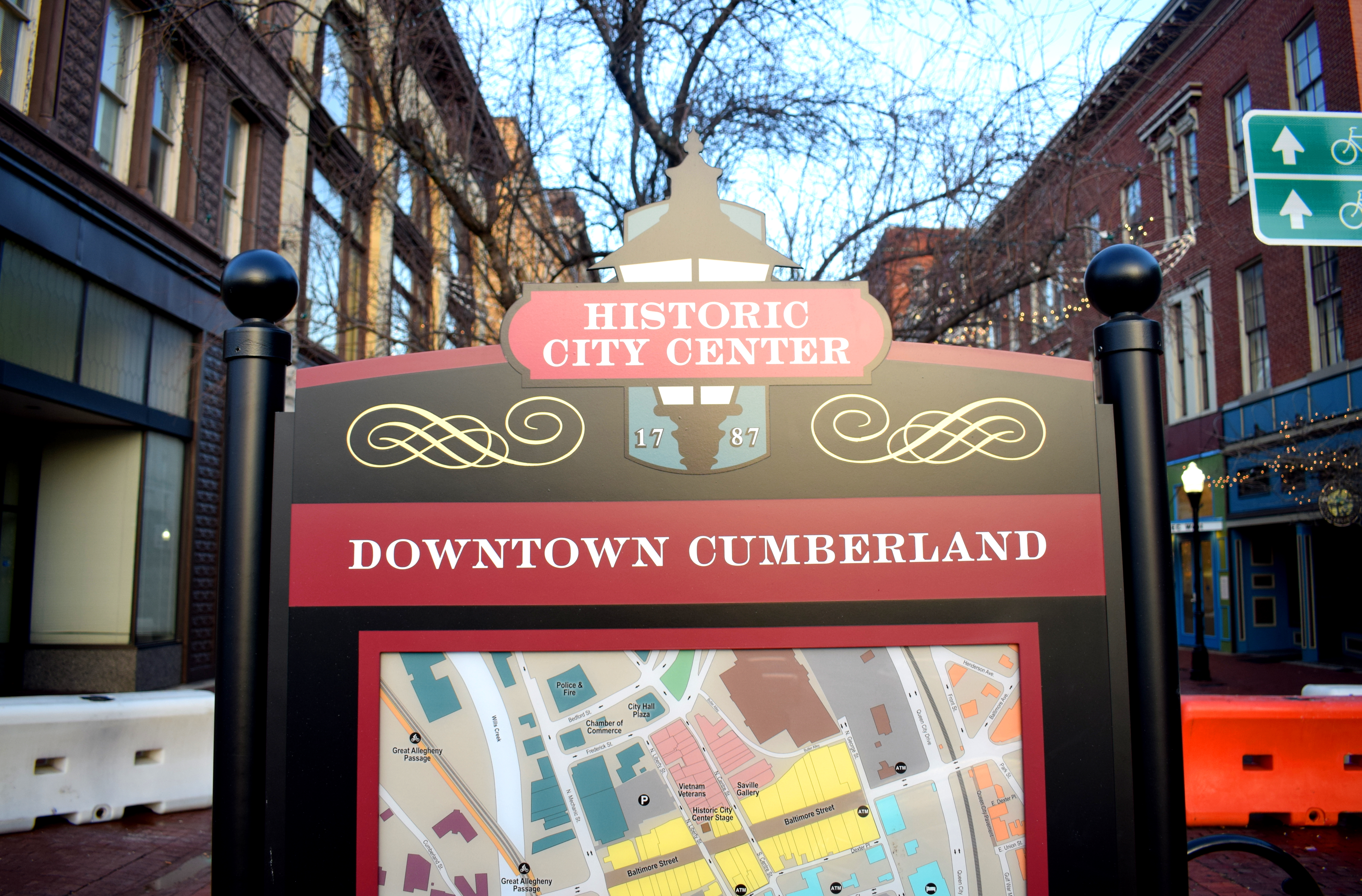
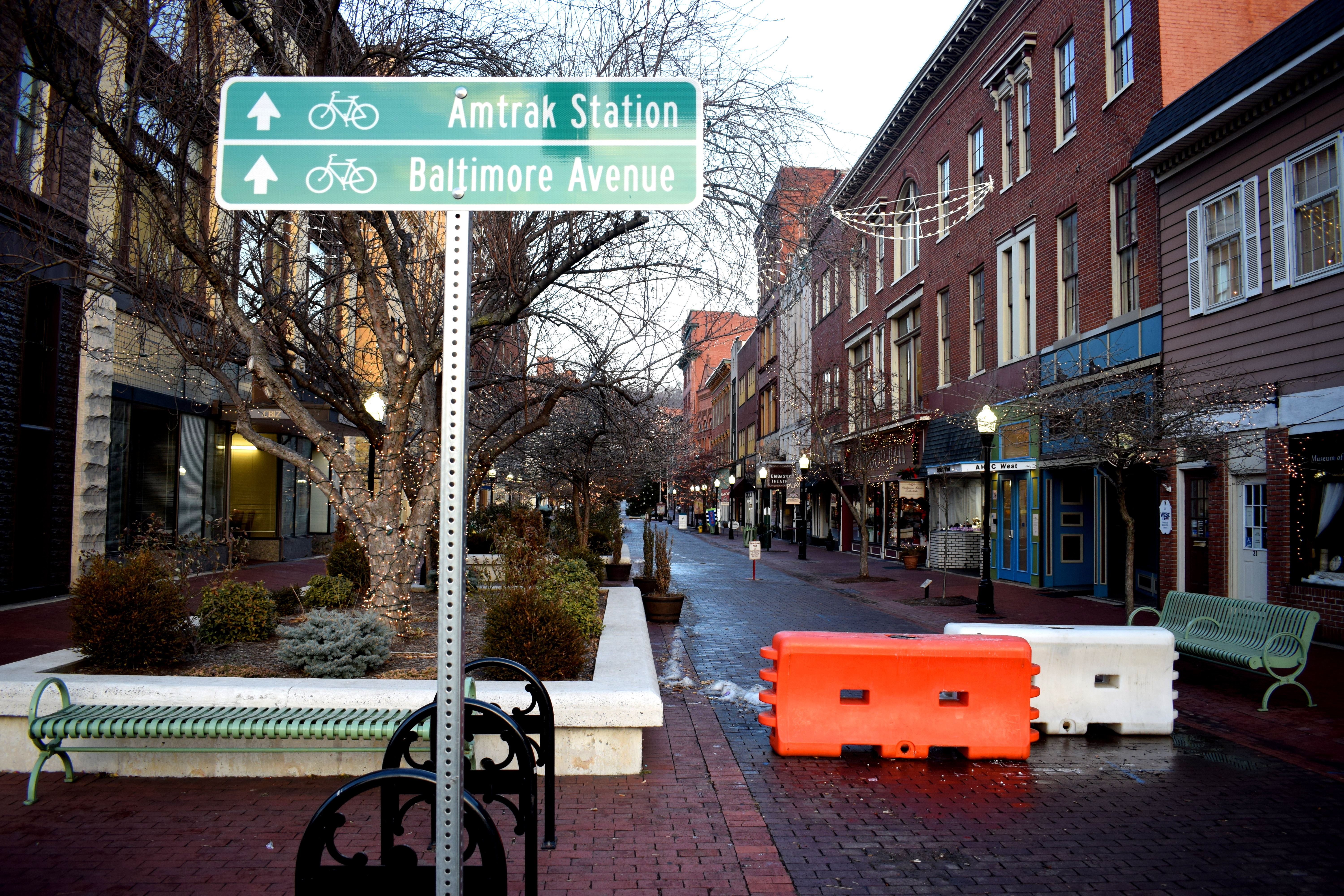 In sum, Cumberland is another beautiful small town in Maryland, a little further out from Washington DC in the Appalachian mountains, but still a relatively short day trip away. Just like Frederick and Hagerstown, Cumberland is a civil war town that could market itself as an attractive tourist destination for Americans interested in the country’s history.
In sum, Cumberland is another beautiful small town in Maryland, a little further out from Washington DC in the Appalachian mountains, but still a relatively short day trip away. Just like Frederick and Hagerstown, Cumberland is a civil war town that could market itself as an attractive tourist destination for Americans interested in the country’s history.
The city has several good things going for it. It is surrounded by beautiful nature and has capitalized on this by setting up a train service allowing people to ride the old Western Maryland railway train and enjoy the scenery of the Appalachians. It has also successfully pedestrianized its historic downtown, a feat that few American cities can boast of. There are also tons of churches and beautiful mansions scattered throughout the town which can serve as tourist attractions.
The city is currently served by Amtrak, with a ride from Washington DC costing $28 and taking a little over three hours. This is the first leg of the journey on a longer route that connects Washington DC with Pittsburgh, Cleveland and goes on all the way to Chicago. So the city is accessible by train. Cumberland should nevertheless lobby hard for high-speed trains to get introduced to the United States. Like Hagerstown, the city would benefit greatly if high speed railways were introduced into the region, since it would allow people in Cumberland to commute to major population centers like Baltimore and Washington DC on the east coast and Pittsburgh in the Midwest with the journey only taking one or two hours.
There are few cities in the United States that can boast of a genuine pedestrianized center on par with European cities. Cumberland is one of them. Add to this the city’s location in a beautiful mountainous region and its historical significance in early American history, and you get a city that is well worth taking the time out to visit.
